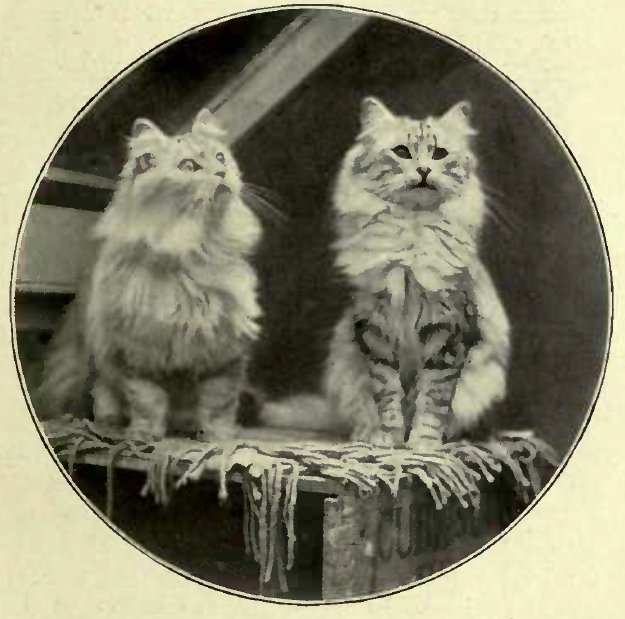V. EXHIBITING
Texte und Bilder aus “THE BOOK OF THE CAT” von Frances Simpson aus dem Jahre 1903
THE BOOK OF THE CAT
CHAPTER V.
EXHIBITING
Amongst cat fanciers there is a laudable . ambition not only to breed good stock but to exhibit it. Certainly there is vastly more gratification and satisfaction in obtaining high honours for cats and kittens that we have bred ourselves, rather than for those specimens which money has purchased. If we consider that our cats have sufficiently good points to merit their being entered for a show, we must bear in mind that all the beauty and form and feature will be thrown away unless our pussies are in good show condition. For exhibition purposes condition means everything, and this is more especially the case with the long-haired breeds. A first-class specimen whose coat is ragged and matted cannot fail to suffer in the judges’ estimation when compared with another cat, of inferior quality perhaps as regards points, but yet in the pink of condition, with its coat well groomed, its eye bright, its fur sof1 and silky. In the present day many of the specimens penned are so close together in point of breed merit that a very little turns the scale one way or the other. I have often said to myself, when judging a class of cats, “This exhibit would be a winner but for its condition,” and I have had to put it down in the list.
There is no doubt that with long-haired cats a fine full coat will cover a multitude of sins, but it cannot alter a long nose or poor shape and bad-coloured eye; and in urging the importance of condition, I at the same time deprecate the awarding of prizes to cats that have nothing to recommend them but their pelage. Seeing, therefore, that a handsome specimen may go to the wall for the lack of attention on the part of the owner, it behoves all cat fanciers and would-be exhibitors to do everything in their power to make their cats look their very best, so that their pets may be things of beauty in the show pen. In the dog, rabbit, and pigeon fancy a great deal more attention is given to condition than amongst cat fanciers, who need waking up to the fact that nothing goes so far to propitiate a judge as superb show form and general good appearance. There may be standards of points for the guidance of the awards, but assuredly a common-sense judge will look with disfavour on a specimen with excellence of breed and correct colour of eye if his coat is draggled and matted, his tail dirty, and his fur soiled.
We have only to run our minds back to the various exhibits of well-known fanciers at our large shows, and we shall find that the most persistently successful exhibitors have been those who have sent their cats to the shows in the best condition. Some fanciers, wishing to help on entries at a show, will exhibit their Persian cats when quite out of coat. This is a mistake; send your entry money if you like to the secretary, but keep your coatless cats at home. As regards the short-haired breeds, these cats should have coats with a gloss and brilliancy like that of a well-groomed horse, shining like satin; a spiky appearance in the fur denotes poor condition in both long and short breeds.
In getting cats ready for exhibition owners should look to their comforts in every way. Their houses and beds should be kept clean, their coats combed and brushed daily. Attention should be paid to their ears, for if these are neglected a cat will continually scratch them, and thus injure its appearance by tearing out its fur. Some fanciers are in favour of washing their cats, but when we take into consideration the usually delicate constitutions of Persian cats, and the restless, impatient nature of these animals, it behoves us to try to find some other effectual means of cleansing their coats, which in the case of white and silver cats are naturally easily soiled. Experience has taught me that very good results can be obtained by damping the coats with a soft cloth dipped in a weak solution of ammonia and water. Follow this up by rubbing some white powder into the fur and well fingering the parts that are at all greasy. Pears’ white precipitated fuller’s earth is the best preparation, and is perfectly harmless. To clean away the powder use a fairly soft brush, and after this process has been gone through several times your cat will be fit for show. Another method of cleaning long-haired cats is to heat a quantity of bran in the oven.
Put it into a large bowl or footbath, and stand the puss in it. Rub the hot bran well amongst the fur for some minutes, and afterwards carefully brush it out. This treatment will give a soft and silky appearance to the coat, but for light-coloured cats the powder is more cleansing.
Cats require to be educated to the show pen, and it is very necessary in some cases to give a course of training. For this purpose it is well to obtain a similar pen to those used at shows, and to place your puss in this for an hour or two daily. In time he will learn to come and sit and look out of his temporary prison, and when he makes his debut he will not spoil his chances by crouching at the back of the show pen, or vex his would-be admirers, who may have recourse to the use of an umbrella or stick to make the exhibit move into a more convenient and conspicuous position.
Taking it for granted you have decided to send your cat to a show, the first step is to register it in the club under whose rules the show is to be held. At present the National Cat Club and the Cat Club both require separate registration, the charge being one shilling. It is, however, to be hoped that the earnest wish of all cat fanciers and exhibitors will ere long be fulfilled, and that one register will be kept by an independent person, so that pedigrees can be verified and mistakes rectified, and the confusion caused by a double registration will cease to worry and perplex the cat-loving community. Registration forms are supplied by the secretaries of the respective clubs, and you must fill in the particulars of your cats as set forth on the forms, a sample of which is here given, together with the registration rules of the National Cat Club:
National Cat Club Registration
The registration rules of the National Cat Club are as follow:
1. Every Cat exhibited at a show under National Cat Club Rules must (except such as are exhibited exclusively in Local Classes, or exhibited in Classes exclusively for litters of kittens), previous to the time of entry for such show, have been entered in a registry kept by the National Cat Club at their offices. A charge of is. each shall be made for registration. In such registry shall be inserted the name and breed of the cat, and its breeder’s name, the date of birth, names of sire and dam, and of grand-sires and grand-dams, and if the dam was served by two or more cats their several names must be stated. If the age, pedigree, or breeder’s name be not known the cat must be registered as breeder, age or pedigree ” unknown, ” any or all, as the case may be. If the name of a cat be changed, or an old name re-assumed, such cat must be again registered and identified before exhibition in its altered name.
2. A name which has been duly registered in accordance with Rule I cannot be again accepted for registration of a cat of the same breed, without the addition of a distinguishing number, prefix, or affix, for a period of five years, calculated from the first day of the year next after the one in which the name was last registered; but the name of a cat after publication in “Our Cats” and the Stud Book, or which has become eligible for free entry therein, cannot again be assumed.
N. B – The name of a cat that has become eligible for free entry in the Stud Booh in any year shall not be changed after the 31st of December of that year.
Cats do not receive a number on registration. Numbers are only assigned to Prize Winners or cats entered in the Stud Book on its publication, on payment of a fee of Five Shillings, in addition to One Shilling for registration.
The application for registration must be made on a form as follows:
Only one cat must be entered on one form, which must be forwarded with a remittance of one shilling to Mrs. A. Stennard Robinson, Hon. Sec., at 5, Great James Street, Bedford Row, London, W. C.
The various varieties as recognised by the Club are as follow:
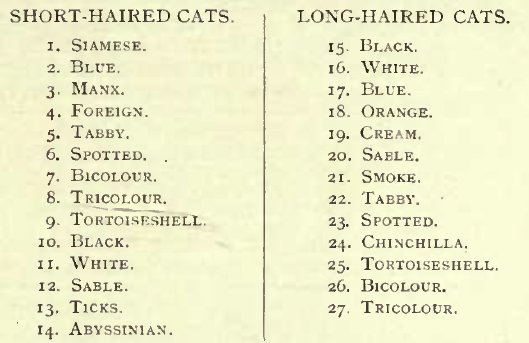
It will be seen that you are requested to give more than one name, and it is very desirable in the first instance to select an uncommon one, which may be considered your cat’s exhibition title, but you will doubtless have some short pet name for home use. A prefix, probably the name of the town or village in which you live, can be used to specially identify your cat. For this an extra charge is made. It is well to fill in the pedigree as far as possible, and every exhibitor should strive to obtain correct particulars of date of birth and name of breeder of the cat to be exhibited. It is a pity to label your cat “unknown,” if with a small amount of trouble exact details can be obtained. At any rate, it is important to state the names of the two parents. The age of kittens should be counted by months – that is, say, from the 20th to the 20th. Having registered your cat, you receive a notification of such registration, and whether you are intending to exhibit or not it is very necessary and advisable that your cat should be duly registered in at least one of the parent clubs.
A separate fee is charged for each cat or kitten in each class, and the amount must be forwarded at the same time as the entry is made. The following is a copy of the entry form used at the Cat Club’s Show at Brighton in 1901, and I may mention that the fee for registration has since been raised from 6d. to Is.:-
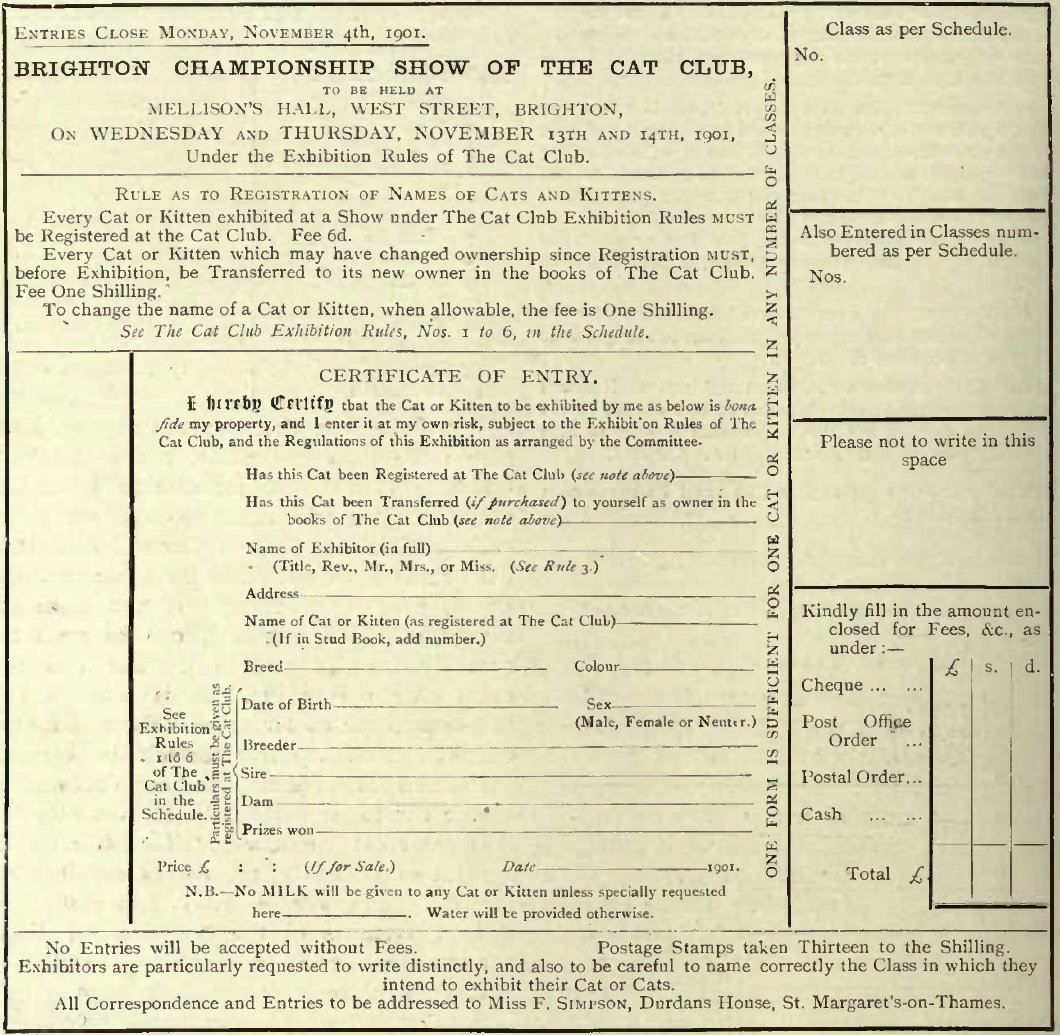
The exhibiting rules should be carefully studied, and intending exhibitors must pay great attention to the classification set forth in the schedule so as to determine the correct class in which to enter their cats. If there remains any doubt in the mind of the novice, then it is best to consult some reliable and well-known breeder, giving a full description of the cat you wish to show.
It is a grievous disappointment if through ignorance or carelessness a good specimen is labelled “Wrong class.”
It is always stated in the schedules that the entries close on a particular date, and that after this none can or will be received. Experience proves, however, that this is often not a law of the Medes and Persians, for the date is frequently of an elastic nature, and therefore it is always worth while for an intending exhibitor to write requesting that, if possible, his entry may be received, although it is forwarded after the advertised time of closing. Many exhibitors are not aware that by paying an extra shilling they can generally secure a double pen for their cats. It is not usual for the secretary of a show to send a receipt for entries and fees, as the tallies and labels which are forwarded later serve as an acknowledgment for these. When by any chance labels, etc., are not received in time to be used by exhibitors, or they are lost or mislaid, then the hampers should be addressed to the secretary of the show, and a note of explanation enclosed. The entry can then be looked up, and the pen number discovered. If cats are entered in joint names, then it is desirable that the owners should let the secretary know to whom to send the labels and tallies, as if these are only forwarded a day or two before the show to the partner who does not keep the cat, complications may arise.
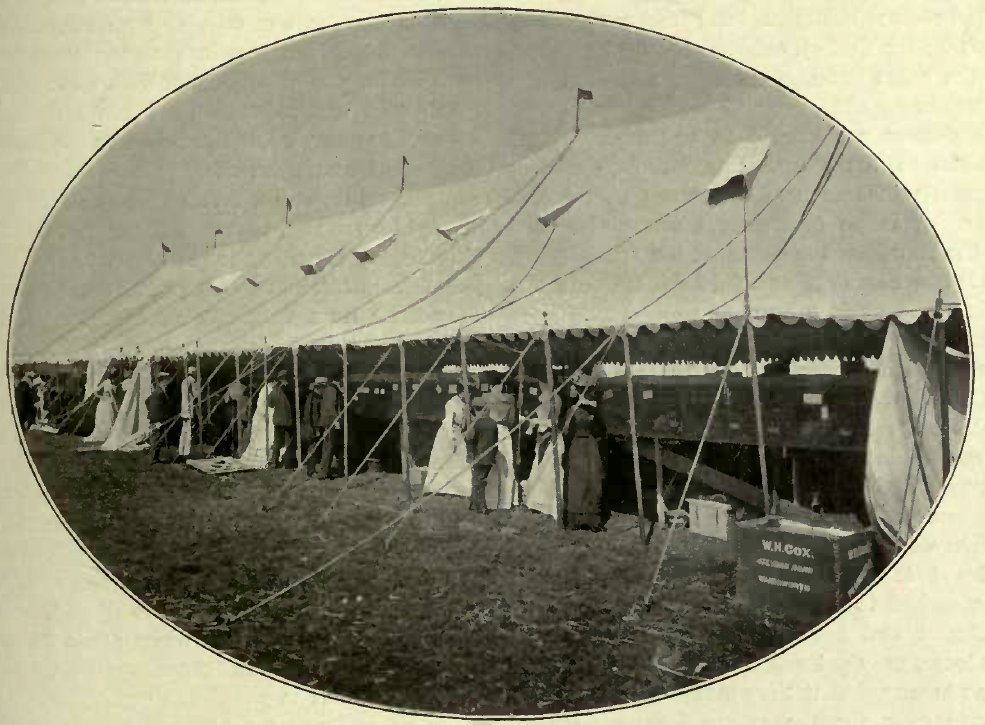
If litter classes are provided at a show, it is well for the intending exhibitor to send the whole litter, as the number of the family is taken into consideration in judging, and perhaps a large litter of six may take over a smaller litter of three, even though the quality of the trio is in advance of the larger family. As regards pairs of kittens, I would say select two kittens as near alike as possible in colour, size, and quality; they need not be of the same litter, but it is as a “pair” they will be judged, so if one exhibit is much inferior to its fellow then the value of the pair is seriously diminished. A defective eye or damaged tail will tell against a cat or kitten in the show pen, therefore it is useless to throw away entry fees upon these blemished, though perchance dearly loved, creatures.
The question of ribbons to suit the colours of the various cats is one deserving of consideration. Many exhibitors make the mistake of using broad ribbons and making very big bows, but both long and short haired cats present a neater appearance with narrow ribbons, and the bow should be stitched in the centre, so that it cannot come undone and thus give a dishevelled appearance to the puss. The metal tallies will hang more gracefully round the neck if a slip ring is run through the hole of the tally and then the ribbon is put through the ring. Cushions and hangings for the pens are not at all desirable, even if they are permitted. They collect germs and become offensive, and moreover it is much better that all exhibits should be placed on the same footing – namely, a bed of hay or straw.
If owners are unable to accompany their exhibits to the show, it is more than ever necessary that secure, comfortable, and safe travelling boxes or hampers should be used for the transit of the cats. It is not advisable, nor is it generally allowable, for more than one cat to be sent in a hamper to a show.
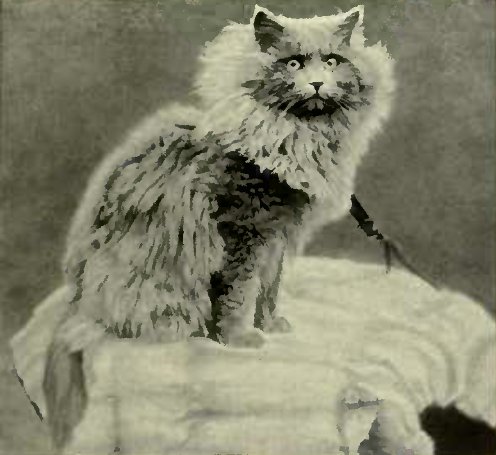
The question of hampers and travelling appliances has been dealt with in a previous chapter, but I would earnestly impress upon exhibitors not to send their cats away on journeys, long or short, in tumble-down hampers and unsafe packing cases. Whether hampers or boxes, I would here suggest that whichever is used let the fasteners be secure and yet easy to manipulate. Straps should be attached to the box or hamper, as in the confusion and hurry of show work these, if left loose, may get mislaid. The labels should be so arranged that they may be conveniently turned over for the return journey, where, on the reverse side, ought to be the owner’s name and full address. It is most important that these should be distinctly written. I recommend all exhibitors to insure their cats when sending them to a show. The charge is 3d. for every £1, and having paid our money we take our chance, which is perhaps a less hazardous one than if this precaution had been neglected.
The arrangements, or rather want of arrangements, as regards the transit of live stock on our railways leave much to be desired, and therefore it behoves fanciers and exhibitors who value their cats for their own sakes and for their intrinsic worth, to do all in their power to mitigate the discomforts of a journey and the risks that must necessarily attend the conveyance of live stock by rail. Some fanciers make it a rule never to exhibit unless they themselves can take and bring back their cats, and though this necessarily entails a great deal of trouble and some expense, yet there is an immense satisfaction in feeling our pets are under our own supervision. There is also an advantage in penning your own cats, and if you arm yourself with a brush and comb you are able to give some finishing touches to pussy’s toilet previous to the judges’ inspection and awards. Let me recommend a metal comb, and a brush such as is used for Yorkshire terriers, which has long penetrating bristles, but is neither too hard nor too soft.
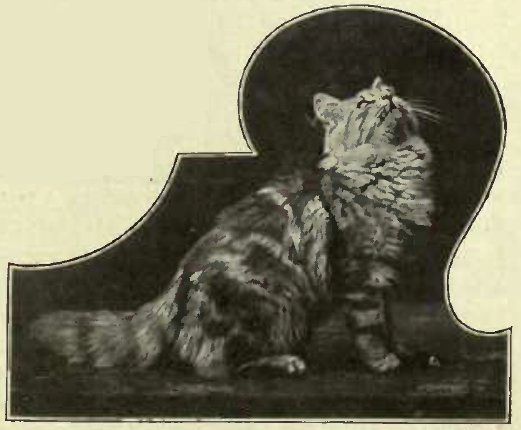
Disqualification of cats or kittens at shows may arise from various causes. First, if the cat has not been registered, or if it can be proved that the animal has not been in the possession of the exhibitor for fourteen days before the show, or if a wrong pedigree has been given, or the date of birth of a kitten is incorrect. Any attempt at “faking” will disqualify an exhibit, and in some cases the too free use of powder on white and silver cats is a disqualification in the eyes of some judges. Exhibitors have been known to dye the chins of tabby cats and treat white spots on self-coloured cats in the same manner. Such “faking,” as it is popularly called, is always risky, as well as a most undesirable operation, and if resorted to ought not to be passed over by a judge who might detect the artifice and yet lack the moral courage to expose the offender. Let me warn exhibitors against the evil practice of over feeding their cats at shows. It is so much better for a cat to starve for two days than to overload its stomach with the plentiful supplies brought by an over-anxious exhibitor.
The sanitary arrangements at present existing at cat shows do not allow of such a course, and if one meal of raw meat and plenty of fresh water is supplied by the show authorities pussy will fare much better than being stuffed with a
Whilst the inmates of your cattery are attending shows it is a good opportunity to give an extra cleansing and airing to their houses, and on their return be careful to destroy the hay or straw contained in the hampers or boxes, and thoroughly disinfect these, leaving them out in the open air for a day or two before packing them away. It is generally advisable to give a slight aperient to grown cats after they come back from a show, for it often happens that these cleanly creatures refuse to make use of the scanty accommodation provided for them in the show pens, and thus complications may arise unless attention is paid to their wants on their return. If many cats are kept, and some are sent to a show, on no account allow these to mix with your other animals on their return. It is a wise precaution to keep then apart for a few days, more especially if you have young kittens to consider.
The prize cards should be returned in the hampers when sent back to exhibitors. If these are soiled or broken on their arrival, a request to the secretary asking for fresh ones will probably be attended to.
Every member of a cat club and exhibitor at a show has a right to lodge a complaint with the secretary and committee of the club under whose rules the show is held, if an injustice has been done to an exhibit in the opinion of the exhibitor. According to the rules a deposit has to be paid, which can be reclaimed unless the complaint is considered “frivolous.”
Show promoters cannot afford to give their money away without some return or provisional stipulation, and therefore fanciers must not complain if when a class does not fill it is either amalgamated or only half the advertised prize money is given. This latter plan is by far the more satisfactory. There has probably never been a show of any live stock held where complete satisfaction has been given; but, generally speaking, “grumbling” is a most mistaken and pernicious habit, and exhibitors should strive to become good losers. If they cannot learn this lesson, then the remedy remains in their own hands, and they had better keep their cats at home rather than run the risk of being disappointed themselves and of causing unpleasantness to others. If a judgment is obviously wrong, then the triumph is with the best cat, and we should take our defeat in a sportsmanlike manner.
In July, 1902, a cat section in connection with the annual dog show was held in the Old Deer Park, Richmond. This proved a great success, and entries numbered over three hundred. A few words in description of this show may be appropriate here, especially in view of the photographs (specially taken) which illustrate this chapter.
Its chief features were the twenty-five entries in the litter classes and the ring class for neuters only. Objection is often made to litter classes, and yet these are certainly the most attractive. I think that double pens should be provided, and special food ought to be supplied for the little ones. It stands to reason that very young kittens cannot be fed like the grown cats, and it is only natural that if big pieces of meat are thrust into the pen for the mother the hungry little creatures will make a rush for it. They bolt down the hard lumps, and these remain undigested in their tender little stomachs. It is not to be wondered at if gastritis, inflammation, and other distressing ailments supervene. It is much better to let the mother do without her usual meat rations and content herself with good, nourishing baby food, such as Mellin’s or Ridge’s, rather than run the risk of providing her with such which will injure her little kittens. With ordinary supervision no evil consequences should ensue from the introduction of litter classes, especially at a one day show. It is not, however, advisable to have litter classes at shows held during the winter months. But in perfect, warm weather no fatalities will be reported.
Certainly the mothers with their families prove a great attraction, and as woollen balls, attached from the top of the pens, are provided for the amusement of the kittens, they delight themselves and their audience with their playful frolics.
The ring class for neuters only was an innovation and proved very successful, and although some of these pet pussies declined to show themselves off to the best advantage, yet they did not “go” for each other as is sometimes the case when the males are within measurable distance of each other. The illustration given is from a photo specially taken for this work, and shows the judges deliberating on the respective merits of the neuter cats. On this occasion a famous Blue Persian owned by Madame Portier carried off the honours.
He behaved very well on the lead, and his grand shape and wonderful coat made him an easy first.
Another illustration shows the judges at work awarding the special prizes, which in many cases have to be decided conjointly. Miss Frances Simpson and Mr. C. A. House are comparing notes and determining which of the first prize kittens is deserving of the special for the best in the show. On this occasion Mrs. Bennet, a well-known breeder of Blue Persians, was awarded the coveted prize.
A general view of one of the rows of pens is given, but on this particular occasion no covering was supplied for the benching, and, therefore, the aspect of the show pens leaves much to be desired. The travelling baskets being placed under the pens, these should be hidden from the public gaze in order to give a neat and tidy appearance to the show. The best material for this purpose is red baize. The custom of allowing exhibitors to pen their own cats enables them to give their pussies a final brush up before they are subjected to the critical examination of the judge. Our illustration represents Mrs. Peter Brown, a well-known breeder of Blue Persians, attending to the toilet of her beautiful “Bunch,” who on this occasion repeated her successes at the Botanic Gardens, and carried off the highest honours in the Blue Female Persian class (see page 73). And now to pass on to another portion of our subject.
Cat Club Judging
A standard of points for all long and short haired cats was drawn up by a sub-committee of the Cat Club, of which I was a member; but since specialist clubs have come into existence, having each their own list of points, nothing much has been seen or heard of the Cat Club’s standard. It is just as well to have some definite lines upon which fanciers and exhibitors may base their ideas, and so aim at, if they cannot attain to, the height of perfection set forth in these standards. They are really not meant for judges, because I venture to assert that a judge is no judge if he requires anything besides his own personal conviction, experience, and common sense when called upon to decide the various points in the different breeds. A good judge of old china will not search for the mark to know whether the specimen is Chelsea or Worcester. He will tell you “it is marked all over” – that is. he knows a good bit of stuff, even if it should not have the gold anchor of Chelsea or the square mark of Worcester ware. So it is with a good all-round cat.
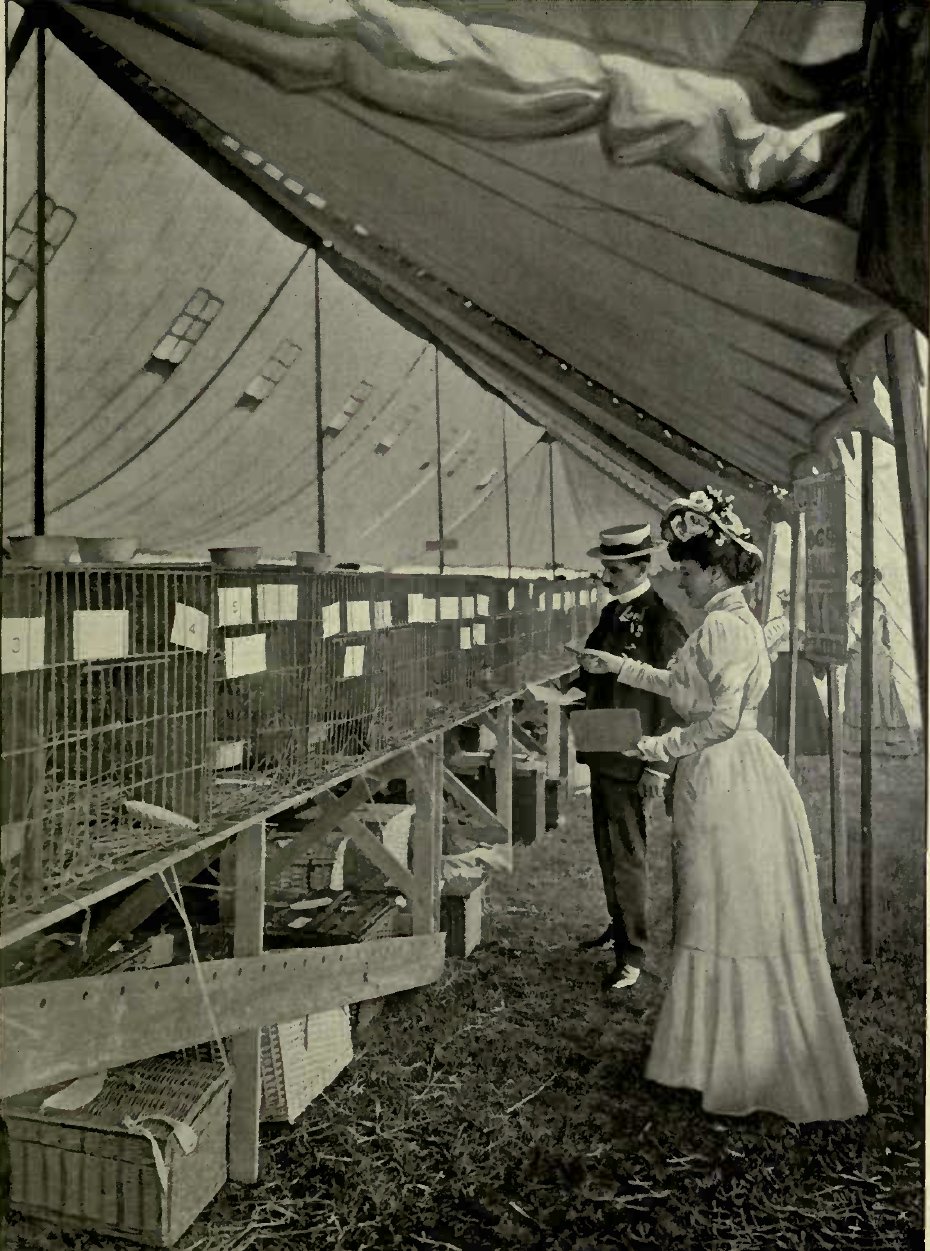
It appeals at once to the eye of the connoisseur, just as a worthless specimen is at once put out of the ranks of winners.
It is the greatest error not to have thorough confidence in oneself when undertaking to judge cats, or, in fact, in judging any animal, or any thing. No one should undertake to judge if they wish to seek the counsel of others. They must have the courage of their own convictions, and, although some amount of training may be required, I think that judges are born, not made; and people who have not a keen power of observation and a faculty of coming rapidly to a fixed conclusion can never hope to become satisfactory or competent judges. There are many cat fanciers on whose judgment of a cat I should implicitly rely, and who know a good specimen when they see it, but if placed before a row of twenty or thirty cats of a breed they seem to lose their heads and get hopelessly confused, and then the reporter says, “We could not follow the awards.” There is no doubt that judges of cats are severely handicapped. Firstly, cats are such terribly timid, shrinking animals that when dragged out of their pens with great difficulty – for the doors are most inconveniently small – they often struggle so violently that, for fear of hurting the animal or of its escaping, the judge will swiftly restore it to its resting place without having obtained much satisfaction from his cursory examination.
Unless judging pens are provided, there is really no chance of making fair comparisons between two cats which may appear of almost equal merit. How is a judge to decide on the form of limbs and general build of a cat when holding it in his arms or seeing it huddled up at the back of its pen ?
An agitation is now on foot for having cats judged in a ring, and, no doubt, in time this will be the order of the day at our shows; but fanciers will have to train up their cats in the way they should go – namely, when quite young they must be accustomed to a lead and also be constantly brought out amongst strangers. As an example, I would refer to the starting gate recently introduced into this country on the racecourse. It was no use to attempt it for the old stagers, but trainers soon accustomed the two-year-olds to the innovation, and I believe many, if not all, the objectors are now converted to the new system of starting racehorses.
In judging a class, I first go round and mark the absent cats; then I note down those that could not under any circumstances take a prize. If there is a large class – say, of twenty to thirty specimens – I mark off all poor and seedy-looking cats until the number is reduced to about eight or ten; then I begin to search for the winners. At this point I take out each specimen, and, if no judging pen is provided, I get someone to assist me, and by bringing out two cats at a time I can make comparisons and note down any remarks in my book for further reference. It often happens that one particular cat will stand out prominently from all the rest in a class. and then there is no difficulty about the first award. It is always well to give a “reserve” and to distribute – but not too freely – the V. H. C., H. C., and C. cards. It does not do to make these too cheap, and scatter them all over the class. V. H. C. might be awarded to a cat in splendid coat, but which failed in head and eyes; H. C. to another specimen with hardly any coat and poor head, but correct in eye; and C. to a promising youngster without any serious fault, only with no striking point of merit.
A good judge must thus weigh the pros and cons and have a reason to give himself or anyone else for each degree of merit, from first prize to the humble C. And here I would mention that there is a nice and a very nasty way for an exhibitor to question a judge’s award. To be attacked suddenly with the query, “Why have you not given my cat a prize?” is quite enough to make a judge retire into his shell and refuse any explanation; but if asked to kindly give a reason why a certain animal has failed to win, and to explain why one specimen, apparently a fine cat, should be lower than another, I am sure any judge would gladly give the inquirer the benefit of his larger experience and the reason for his awards. It is a mistake for a judge to distribute the full complement of prizes in a class when and where the exhibits are not possessing of sufficient merit. A first prize cat should be a good specimen of its kind, and it is much better to withhold this award than to give it to a poor representative of his breed. It also reflects discredit on a judge, for an exhibitor wishing to boast of his honours may publish that his “Tommy Atkins” took first under so-and-so, when perhaps there were only two cats in the class.
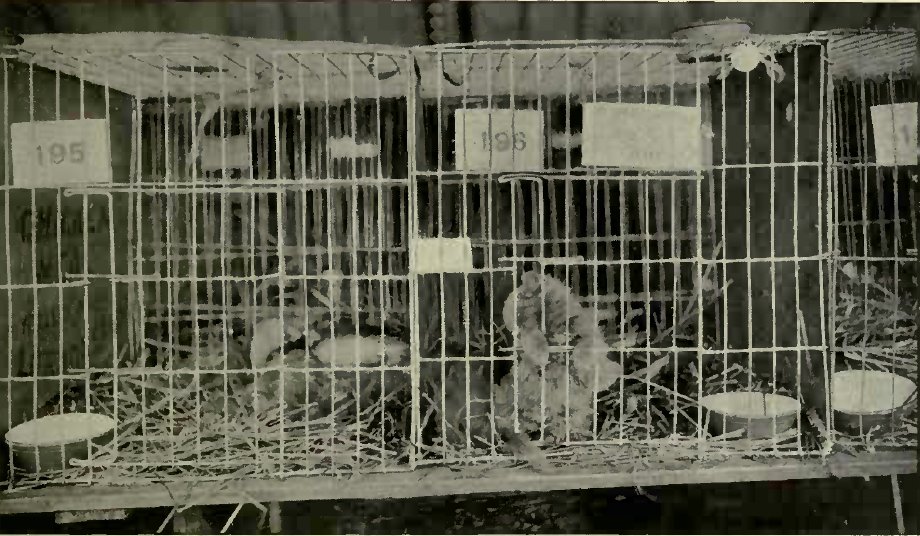
It is quite legitimate for a judge to ask permission of the show authorities to award an extra prize in a large class with several fine specimens; and if he has withheld others in a poor and badly filled class then there is no extra burden put on to the funds of the club. A great deal should be left to the discretion of the judge, and in the matter of special prizes, if one is offered for, say, the best longhaired white cat, and only one or two specimens are on show, and these are neither of them good types of this breed, then the judge should be empowered to withhold the prize. Such a course may be an unpopular one, but I am sure it is the correct and fairest one, for it is a farce to award first prize and specials to an inferior animal just because he happens to be without other competitors. Anyone who has judged the large classes of blues and silvers which now appear at our principal shows will bear me out in my suggestion that such classes, numbering perhaps thirty and more exhibits, should be subdivided according to age. Such an arrangement would be welcomed by judge and exhibitor alike. At the Crystal Palace Show in 1901 the blue kittens numbered thirty-nine in the class, male and female, the age limit being three to eight months.
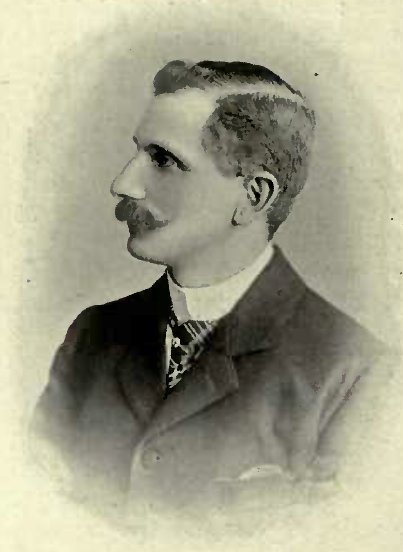
How could a judge be expected to satisfactorily award three prizes in such a huge class? And I know that many superb specimens on this occasion had to be content with a V. H. C. card, which it would have gone to my heart as a judge to place on their pen.
If there is a prize offered for the best cat in the show, the judge or judges have not to consider which is their favourite breed or which is the most fashionable colour, but just which cat is the best possible type, which specimen is the nearest perfection, and which is exhibited in the best all-round show condition. In longhaired classes the length and quality of coat and fulness of ruff go a long way towards a high place in the awards, and, as I have before remarked, condition is a most important factor in the judges’ estimation. In the self-coloured classes of blues and blacks a judge should make diligent search for white spots on throat or stomach. Formerly cats thus blemished were relegated to the “any other” class, but it has been wisely decided by both clubs that cats with white spots should be judged in their own classes, and that this defect should count as a point or points against them. This is as it should be, for to place self-coloured cats in an “any other colour” class seems absurd. They are black and blue cats in spite of a few white hairs, and should be judged as such.
They may never aspire to a first prize, at any rate at a large show; but surely a really fine black or blue cat, with correct eyes, grand head, and good shape, even with the unfortunate spot, should and ought to score over a poor specimen with green eyes and long nose. In the tabby classes a judge will first consider the groundwork and markings, and to these premier points special attention should be given, as there is a tendency to breed tabby cats which are barred only on heads and legs, the body markings being blurred and indistinct. It is not unlikely that indue time the “any other colour” class will no longer form part of the classification at our large shows. Formerly this used to be the largest class of any, but nowadays the entries are becoming small and beautifully less. It is not worth while for a fancier to keep these specimens – they do not fetch any price, they are not valuable as breeders, and it is quite a toss up whether they can win in such a mixed company. I remember the time when blues were entered in the “any other colour” class, and when blue tabbies were more numerous than silvers or blues. It is really a most difficult task for a judge to give his awards at a local show where all sorts and conditions of cats are placed in the one class.
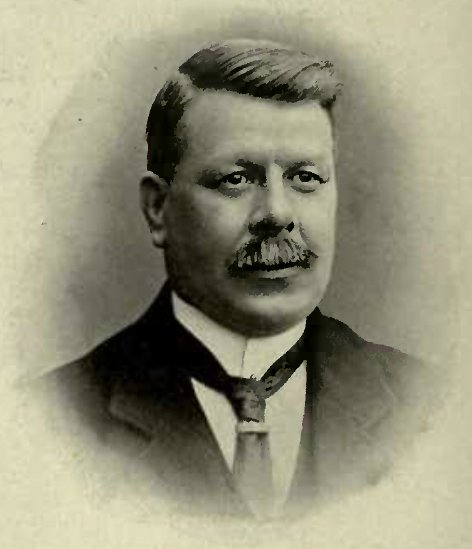
Such an arrangement is good for neither man nor beast.
And then, again, at our large shows it behoves a judge to be very level-headed to cope with the numerous brace, team, and novice classes, for one cat may be entered in all these, besides being in the open cat and kitten class; and woe betide the unfortunate judge who makes a slip, for the wrath of the exhibitor and the sarcasm of the reporter will be poured out upon him. No doubt it is a grave mistake to reverse one’s own awards, and yet judges are but mortal, and “to err is human. It is hard when cat fanciers take to judging the judges and their judgments. A judge may be absolutely ignorant of the owners of the cats, and thus utterly unbiased; yet there will not be wanting those who will pick holes in their characters, and see in their awards clear proof of personal spite and party favour. The intense suspiciousness of some fanciers and the readiness with which they impute low motives to others is greatly to be deplored.
I will here quote from an article by Mr. C. A. House, the well-known editor and judge of live stock. Under the heading of “The Judging of Cats,” Mr. House says: – “All my awards are based on the idea that each breed possesses a distinctive feature, and that distinctive feature must be the one to which most consideration is given. After the chief features come others, such as shape, coat, colour, etc., and the premier awards should be given to cats possessing the best all-round properties…. Selfs, above all things, should be pure in colour. For instance, a blue should be blue, and a black, black. Yet a little rustiness of colour should not be allowed to outweigh a host of other good properties. Colour, however, is hard to breed rich and pure, and should at all times be more highly valued than size, or even coat. The same with markings. Only those who have tried to breed markings know how difficult it is to get them anything approaching perfection. Nothing is more fleeting than marking, and nothing more tantalising to the breeder.
Summing up the matter, my own opinion is, and has been for years, that the cat fancy has been hindered and hampered by judges judging the exhibits because they belong to so-and-so, or had won so-and-so under so-and-so…. I was much amused at one incident at Westminster where a big champion had suffered defeat. The fair owner was heckling the judge, and he in reply to her remarks made this answer: ‘It makes no difference to me had the cat belonged to the Queen herself; I should then have done the same. I don’t judge cats on what they have previously won or because they belong to any particular person. I judge them on their form at the time, and it makes no difference to me if a cat has won fifty firsts or none at all. ‘ This reply was more than the exhibitor had bargained for, but all honest-minded fanciers must acknowledge the judge was right. What is sadly needed in the cat fancy to-day is more of this sturdy, unflinching determination to judge cats and not their owners. Cat exhibitors have much to learn yet, and the sooner the morale of the judging arena is raised the more healthy will the fancy become and the more quickly will it advance.”
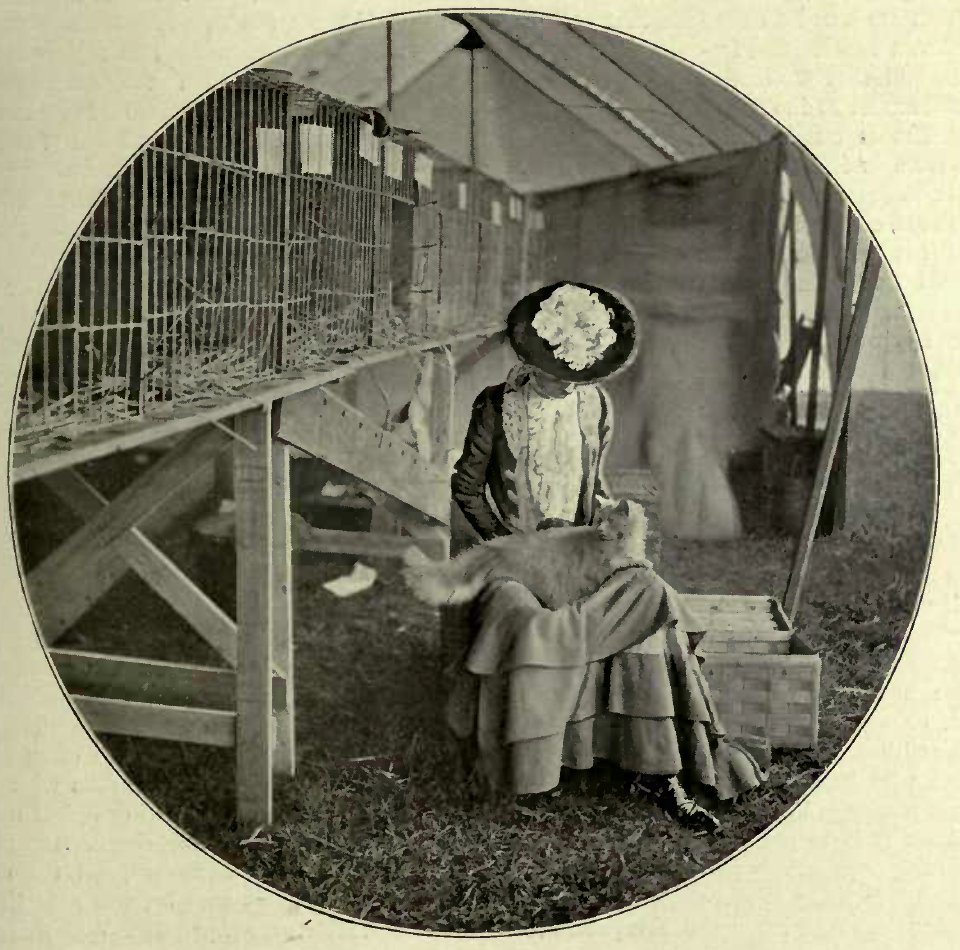
Another of our well-known judges, Mr. T. B. Mason, writing on the same subject, says: – “In my judging engagements I have very often come across exhibits with good coloured eyes, but not the correct shape. A small eye, however good the colour may be, will give the cat a disagreeable, sour expression. With this shape of eye we generally see a narrow, long face, which should keep any exhibit out of the prize list in good competitions. Let it, however, be clearly understood, I do not want eyes to have undue weight in the general conditions of cat judging; but they are important, and as such ought to have due and careful attention at the hands of breeders and judges alike. Two things in the judging of short-hairs weigh heavily with me, namely, pale colours and light-marked heads and white lips. These defects, in my opinion, ought to put out of the money those that possess them in good competition. I perfectly agree with Mr. House about the standards. They are useful both to the breeder and judge; but for the judge to take the standards and try to judge by them at any show would be foolish indeed.
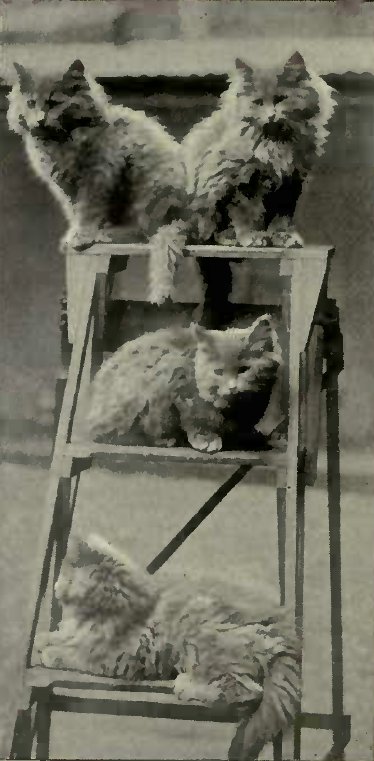
All judges are expected to know the varieties they are called upon to judge, and to have the faculty to weigh up the good points and defects of the specimens before them, and place them accordingly.”
Management Of Cat Shows
Now to turn our attention to the management of shows, and upon this question I feel I am fairly competent to give an opinion, as I have acted as show manager and as show secretary to some of our largest exhibitions in London and at Brighton. The office is indeed no sinecure, and very few fanciers, exhibitors, or visitors have any idea of the enormous amount of forethought required, to say nothing of physical and secretarial labours, to make a big show run smoothly. The responsibility also is great, for a conscientious manager feels he has valuable live stock in his temporary possession, of which he has, so to speak, to render up account. There are many mixed shows held throughout the country where a cat section is given, and it is to be regretted that in most, if not all cases the poor pussies are badly provided for and generally go to the wall. At a dog and cat show everything goes to the dogs! Secretaries wishing to promote successful cat sections at their mixed shows should secure some well-qualified person to have entire control of this department. It is certainly true that, of all live stock, cats require the most consideration and supervision, and yet to the masculine mind of a show secretary it would appear that the cats can look after themselves.
There is no doubt that the first step towards making a show successful is to engage the services of a competent, energetic, and painstaking manager and secretary. It is also very desirable to appoint a really good working show committee, the members of which should each undertake some particular duty in connection with the show. For instance, one member might superintend the feeding, another could be responsible for obtaining promises of special prizes, another devote him- or herself to verifying the prize tickets placed on the pens, and so on. A system of advertising a show must be decided upon by the show committee, and notices sent to the various journals which are circulated amongst fanciers. The class and prize tickets must be ordered in good time either by the secretary of the club or the manager of the show.
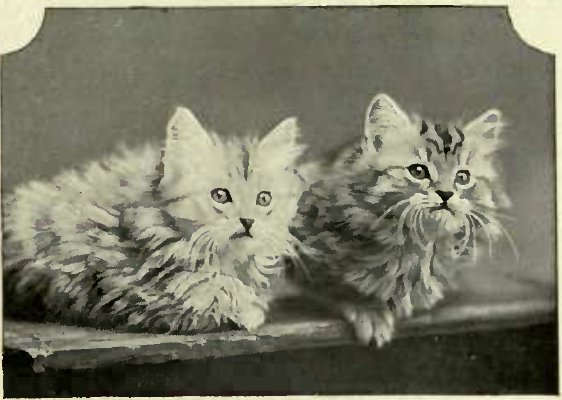
The best time of the year for a show as regards the appearance of Persian cats is in December or January. Then, if ever, these particular cats should be in the best show condition. As regards kittens, the early summer or autumn is the best period, as spring kittens will then be ready to make their bow to the public. It is much to be regretted that the two principal shows of the National Cat Club – namely, the Botanic Gardens and the Crystal Palace Shows – should be held respectively in June and October, when Persian cats are in poor coat.
Quite three months before the date of the show a managing secretary will start work. Catalogues of previous shows must be collected together, in order to ascertain the names and addresses of likely exhibitors.
Special prizes are now a great feature at all cat shows, and a good deal of extra work is entailed by writing to obtain promises of these for the various breeds. If possible, it is well to appoint someone who is in touch with those who are likely to become donors, and to hand over this department. I would advise anyone undertaking this branch of the show to have a book, and to head each page with the respective classes of long and short haired breeds, and then when a special is received – say, for the best black Persian cat – to place this on the page set apart for specials for this particular breed. Keep a separate list for kittens, and decline to accept specials given in the form of stud visits or for cats bred from such-and-such a sire; these savour too much of self-advertisement. There are so many specialist societies nowadays, and as these provide their own specials the show executive is considerably relieved of the duty of obtaining prizes.
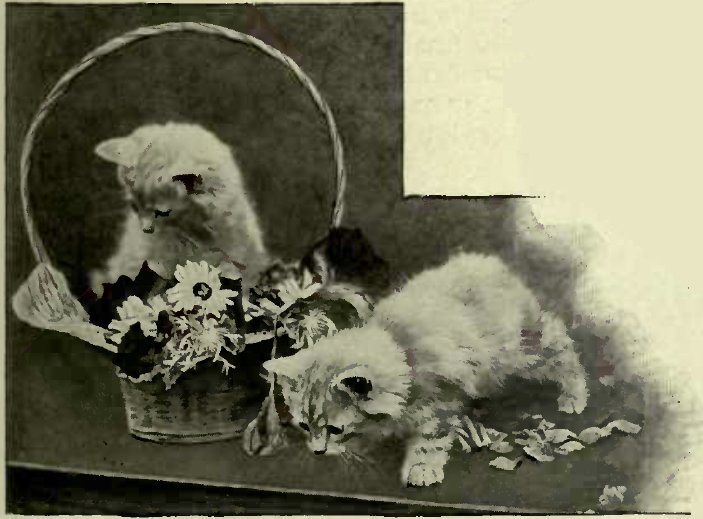
Of course, there are always a certain number of challenge cups, medals, and specials given by the club holding the show, and care should be taken to distribute these fairly amongst the various classes. It is usual and advisable to limit the competition of the majority of these special prizes to the members of the club. I do not approve of a special prize being offered for the best cat in the show, as it is almost impossible for the judges to arrive at a satisfactory decision, and considerable heartburnings are generally the result of such a competition. A very useful mode of assisting a show is by guaranteeing classes; and I would suggest yet another plan, namely, to subscribe so much towards the expenses of the show. These are necessarily heavy, and it has been stated that no cat show can ever be made a paying affair.
As regards the specialist societies, I think it seems the correct thing that the club intending to hold the show should instruct its secretary to write to the secretary of each specialist society to ask if he is willing to support the show by prizes or by guaranteeing classes, and to name the latest date for receiving particulars of the support to be given. The specialist societies have their own judges, and it is only natural when they are offering handsome prizes that a claim should be made for first-class judging in the interests of the breed. It is therefore essential, as matters at present stand, for one of the judges from the list of the specialist club to be selected to give awards in the classes connected with the society. It is important to obtain as full a list as possible of special prizes from societies and outside donors in good time for insertion in the schedule, as a tempting list will ensure a better entry. In the schedule the exhibition rules of the club should be printed, and in addition there should be a list of arrangements in a prominent position setting forth details as to the opening and closing of the show, the time up to which exhibits are received, the earliest hour at which they may be removed, and the prices of admission.
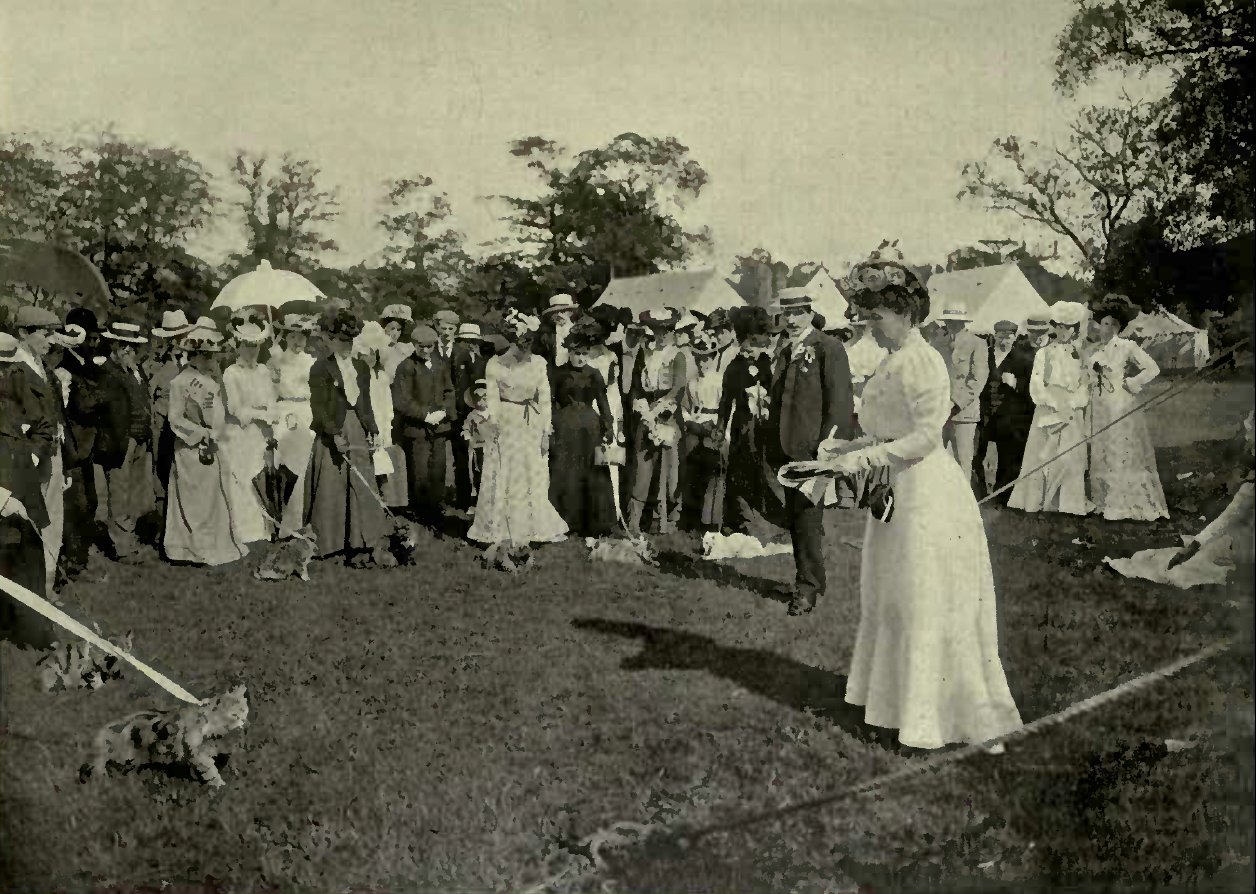
The names of the judges, with their respective classes, should be clearly set forth, and it should be mentioned whether classes will or will not be amalgamated or cancelled. A few advertisements of stud cats and trade notices should be obtained, as this means grist to the mill and helps to pay for the printing of the schedules and catalogues.
The question of classification is an all-important one, and needs the consideration of a careful show committee, well versed in the ways of cats and of fanciers. A list of the classification used by one or two big cat clubs has been given. Of course, at smaller shows it is often impossible to give separate classes for several breeds or to divide the sexes; but my remarks in this chapter will refer to the customs and arrangements of large shows, such as those held by the National Cat Club at the Crystal Palace, and the Cat Club at Westminster. I do not think it is good policy on the part of a show committee or management to amalgamate classes. It is much better to advertise in schedules that when entries are fewer than, say, four or five, then the judges are empowered to withhold any of the prizes; or, again, in the case of a very small class, half prize money might be awarded.
Having decided on the classification, and given as liberal and attractive a one as 1 possible and practicable, it is well to consider the number of schedules likely to be required, and then start addressing the wrappers. In each schedule must be inserted two or three entry and registration forms. The entry forms. with fees, are returned to the secretary, and the registration forms to the person who keeps the register of the club holding the show. And here I would remark on the mistake it is to have two registers for cats. It is very confusing for exhibitors, and a double expense, as the National Cat Club and the Cat Club each charge a shilling. Then, again, as the National Cat Club has recently passed a rule disqualifying all cats exhibited at Cat Club shows, the confusion is worse confounded. Some fanciers having large catteries divide their exhibits and send to both National Cat Club and Cat Club shows; but this new registration rule falls heavily on cat fanciers who are keen to exhibit their specimens and anxious for the pleasure of obtaining prizes, and desire to profit by showing their stud cats or having an opportunity of disposing of their stock.
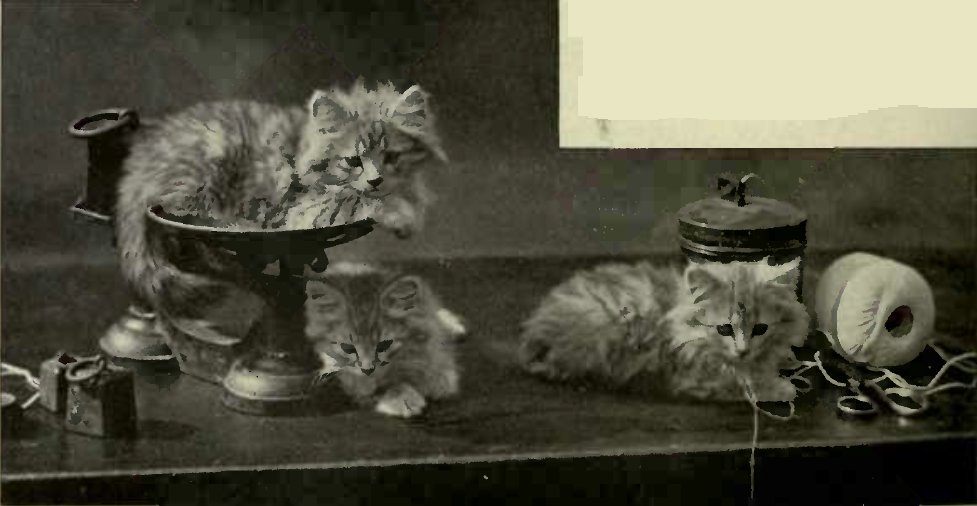
The National Cat Club shows since the passing of this rule have suffered considerably, both from lack of entries and by the absence of some of the fine champion cats that, having been exhibited at the Cat Club show in January, were thus debarred from appearing at the Botanic Gardens and Crystal Palace shows. How much simpler and better it would be if both clubs could and would agree to have one register kept by an independent person, not necessarily a catty individual, and that the fees should form the salary of such a person. A small fee might be charged when reference was desired by fanciers as to the pedigree of any cats. If the secretary7 of a show happens to be acquainted with the members of the cat fancy, he will be able to use his discretion as to the number of entry and registration forms needed. In some cases, where he is sending to a well-known breeder and possessor of a large cattery, more numerous forms will be required. Schedules should be sent out quite a clear month in advance, and the entries should close about ten days before the date of the show. The secretary will have a book in which he will note down each entry as it is received, placing it under the correct class heading, and, of course, these can only be numbered up when entries close.
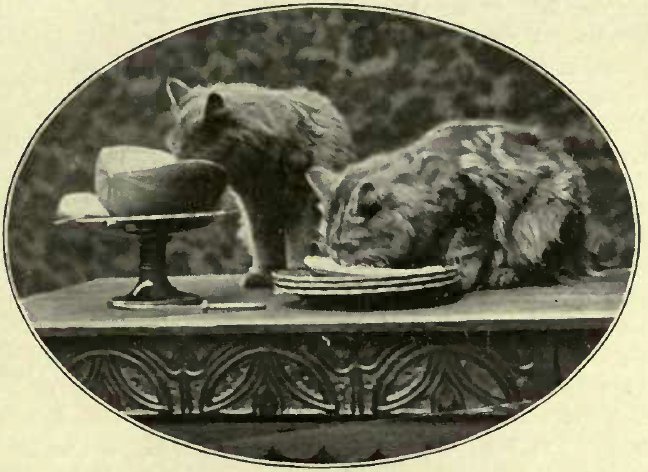
The entry forms should be filed and kept for reference. Then comes the work of arranging and writing the labels, and placing these with the tallies, entrance tickets, and removal orders in envelopes and addressing them to the exhibitors. These should be posted four clear days before the show.
During this time the secretary will be able to compile the catalogue for the printer, and arrange to have an instalment of copies the night before the opening day of the show, also to draw up the judges’ books. Letters should be written to the judges and veterinary surgeons acquainting them with the hour at which they are desired to present themselves at the hall, and a complimentary pass ticket should be enclosed. A pass should also be sent to the representatives of the Press, to the veterinary surgeon, and to those who may be giving their services as stewards. Distant exhibitors will write requesting catalogues to be forwarded to them, and a list should be kept. A secretary will do well to provide himself with strong cord, scissors, brown paper, writing materials, labels, telegraph forms, stamps, and other useful articles.
In these days of specialist clubs it is necessary for the secretary to have a list of members of each society supporting the show, as the prizes being confined to members the judge will have to refer to the secretary’s office for information before making his awards.
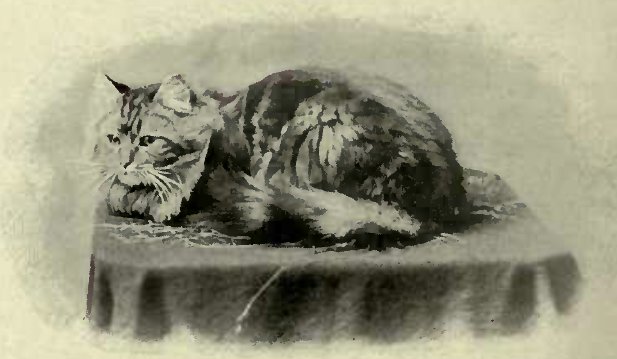
The day before the show will be fully occupied in superintending the arrangement and putting up of the benching and pens. A conveniently sized glass case should be ordered for the special prizes, and this must be placed in a prominent position. The prizes should all be distinctly labelled with the donor’s name and the breed of cat for which each is offered. The case should be one which locks up, and then it is not necessary to have any supervision of the contents. It is best for some two members of the show committee to undertake the arrangement in the case of the special prizes. Two men should be engaged to take the tickets and money at the entrance gate, and in the sales office a clerk will be required to receive purchase money and give receipts. At a large show it is necessary to employ four or six stewards to collect the judges’ slips as they complete each class, and take them to those in the office appointed to write out the tickets. These same stewards should also undertake to place them on the pens.
And here let me say how much better it would be if some arrangement could be made for the prize tickets to be fixed in a rack at the top of the pen, instead of being thrust between the wires, where a large number almost hide the cat, and frequently they are torn down by the inmates of the pen.
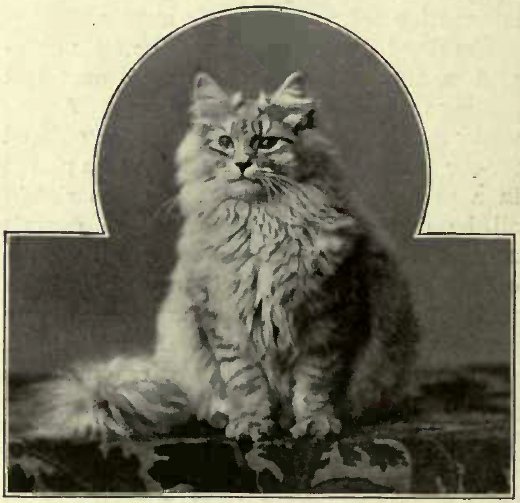
A good manager will have all in order well before the hour when the cats are received, and if the veterinary engaged is in attendance the cats can be examined and, when passed, placed at once in their proper pens. It is very important to entrust the work of penning to those who are used to handling cats, and no better men can be found than those employed by Messrs. Spratt, who, as everyone knows, are the universal providers at cat shows, as at every other live-stock exhibition. It is a question whether hay or straw is best for bedding. I incline towards the latter if it is the fine wheaten straw, as hay, if it becomes at all damp, will stick to the long-coated cats. I also prefer dry earth at the back of the pens to sawdust, for the same reason. I trust we may ere long be able to provide something better in the way of a cat pen than those at present in use. The doors should open the full height of the cage and two-thirds of the width, so that the cat can be more easily taken out.
There is no doubt that, considering the peculiar nature of cats, some more adequate arrangement should be made in the sanitary accommodation. The earth scattered at the back of the pen amongst the bedding is not all that could be desired. What we want is a false bottom, and an earth pan or tray sunk in it about two inches deep, on the plan of the bird cage, so that it can be drawn out and fresh earth supplied, and replaced. Greater care should be paid as regards the security of the fastenings of the pens, and the wires of some of them are too wide apart, so that young kittens can easily make an exit. It is well known that cats have extraordinary powers of escaping whenever and wherever escape is possible.
I disapprove as strongly as do the cats of any disinfectant being sprinkled or placed inside the pens. Each pen must, of course, bear a number; but instead of the different classes being numbered, it is much better to have them named, and the large placards fixed high about the pens by means of split sticks of Japanese bamboo. Thus anyone seeking the blue or the brown tabby class will have no difficulty in locating it, even without a catalogue.
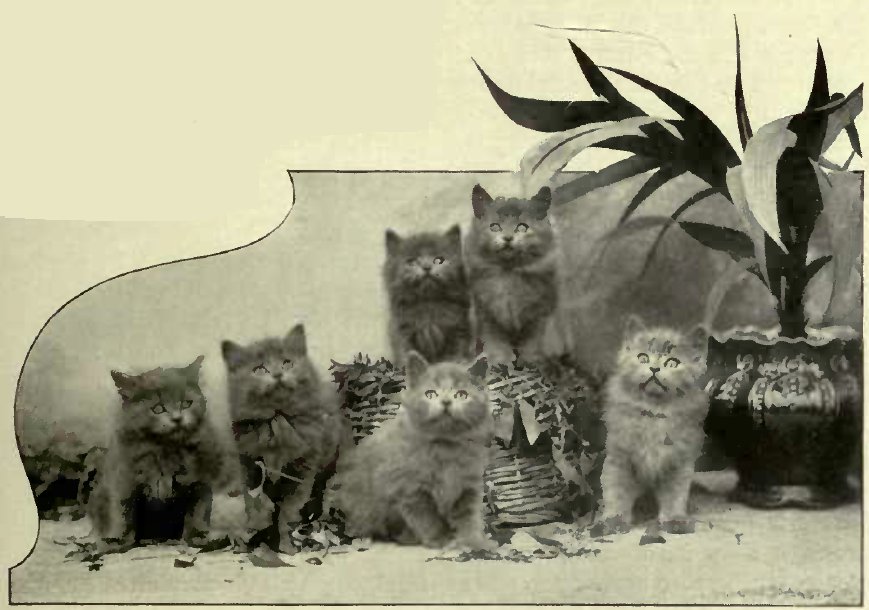
It is very important that all exhibits should be examined by a qualified veterinary surgeon before being penned, and if a cat is seriously ill the owner should be at once communicated with and the specimen returned. If it is a doubtful case, perhaps a running eye or high temperature, then the cat should be placed apart in a properly arranged, and if possible warmed, hospital room to be again examined. Remember it is always better to disappoint one exhibitor by refusing his cat, than to disgust everybody by bringing their carefully trained and dearly loved pets into contact with disease. It is necessary to appoint an official to check off each exhibit as it is passed, and in the event of pronounced illness or some other objectionable feature to make a note of this for future reference.
As regards the feeding of exhibits, I am in favour of raw beef or cooked meat cut into small pieces or else put through a mincing machine, and water to drink. For many reasons it is not desirable to provide milk; it is apt to turn sour, and it certainly more easily collects germs of disease, and so may prove a fruitful source of evil.
The Cat Club started the idea of having china saucers instead of the usual tins, and these are decidedly better in every way. A one-day show is no doubt best for the cats, but for the exhibitors and the executive a two-days show is really preferable. If the exhibits are allowed to be penned up till eleven o’clock on the morning of the show, the judging ought to be got through and the tickets placed on the pens in two hours with a competent staff, and the show opened at one or 1. 30.
A smart secretary will arrange with his printer to have a list of awards printed with the utmost speed directly after the class judging is finished. This can either be given in the catalogues themselves or a separate sheet inserted in the catalogues. A large board ought to be hung in a conspicuous and convenient position, and the list of class winners and the winners of special prizes entered on it. This is better than having the slips pinned upon a board. They are often very indistinctly written, and are apt to get torn down. Let the closing hour on the first night be eight or nine o’clock, when the hall should be cleared and the pens covered over. I consider one good feed of raw meat ought to suffice during the day, with fresh water continually supplied. The hour for opening on the second day may be ten o’clock, and before then the pens ought to be cleaned out, fresh straw given where needed, and disinfectant sprinkled up and down the passages between the rows of pens – not in them. Careful attention to these points will ensure the show being free from disagreeable odours by the time the public are admitted.
It is a wise plan to arrange and announce that the show closes, say, at five p. m. on the second day, so that exhibitors can, in many cases, get home with their cats the same night. It is unreasonable to expect to be allowed to depart before the time fixed, even though in some cases half an hour would save a train. As regards a one-day show, it is almost impossible for a secretary and manager to get through the necessary work and to open in anything like time. There must be a scramble, and for the exhibitors to be obliged to present themselves and their cats at some unearthly hour in the morning is very trying and most inconvenient. Then a two-days show is, of course, an advantage as regards the entrance money. The Cat Club used to have a stringent rule against exhibitors penning their own cats, but at the Westminster Show this rule was amended, and cats could be penned by their owners or representatives on the night before the show, but not in the morning. No evil result followed this concession on the part of the authorities, and therefore I trust this very natural desire on the part of the exhibitors to see their precious pussies safely into their temporary quarters may always be permitted at Cat Club shows.
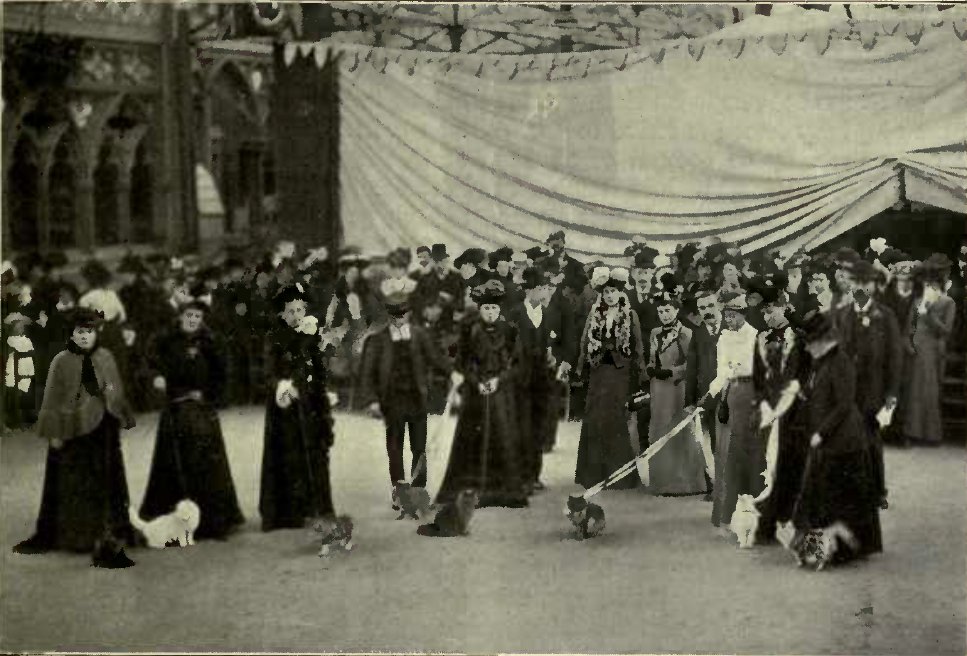
In order to facilitate the work of the judges, it is well to have their books carefully and clearly arranged, and this especially applies to the list of special awards. I instituted a plan at Westminster Show, in 1901, which gave great satisfaction, but which entailed a lot of extra work for the secretary. I am sure, however, this special arrangement lightened the labours of the judges, and hastened the appearance of the special prize cards on the pens. I had separate books for the special awards, and carefully cut out of the schedules the prizes pertaining to each judge. Thus, if Mr. A. had black, white, and blue long-haired classes, every challenge medal and special offered for these cats I arranged in order on one side of the page, with the numbering as it appeared with them in the schedule. So in the left-hand page would be, say, “Special No. 10, for best long-haired black,” and on the right-hand page ” Awarded to No….., ” leaving a blank for the judge to fill in the number of the winner. Any prizes that had to be awarded in conjunction with other judges, such as for best long-haired cat in the show, I made a note of to this effect.
Let me add that I gummed the printed portions relating to the prizes, cut from the schedule, into the judging books, so the judges needed neither schedule nor catalogue to refer to. In preparing judges’ books it is very helpful to place male and female (M. and F.) after each catalogue number in the mixed kitten classes, to avoid reference for the special awards; and this should also be done in the catalogue itself, as very often the name of the kitten does not indicate the sex, and would-be purchasers are obliged to make inquiries.
I am always an advocate for having selling classes for cats and kittens at shows, where the price should be limited to £5 5s. in the long-haired classes, and £3 3s. in the short-haired classes. It would be an assistance if someone who understood cats, and was also a good salesman or saleswoman, undertook to preside over the selling classes. The 10 per cent. commission deducted by the show authorities is a material help, and often a little pressure and persuasion, combined with useful information, will decide a wavering purchaser. A class I should like to see introduced into our shows is one for kittens bred by exhibitors. I am of opinion that more encouragement should be given to fanciers to keep the best of their litters for exhibition. Lady Marcus Beresford had the happy inspiration of starting breeders’ cups for competition at Cat Club shows, and special prizes are often given for the best kitten bred by exhibitors. But these are tiresome awards for a judge to make; he is obliged to make inquiries from someone with a catalogue, and even this reference will not always suffice.
It is always pleasant to win prizes, but an additional pride would naturally be felt if, in a large class of kittens bred by well-known exhibitors, the son or daughter of our own breeding should be awarded first and special.
With respect to a ring class, which is often held at some of the National Cat Club shows, I cannot say that it is very interesting to see a collection of toms, females, and neuters, long- and short-haired, being dragged along by their anxious owners, whilst the puzzled judges try hard to decide which of the motley and mixed assembly is most worthy of honours. I think that for a ring class neuters alone should be eligible, or at any rate until we have trained our young cats to behave properly on a lead. There need be no necessity for the neuters to be entered and penned in the show, but they could be charged a higher fee for the ring class; and I believe that many owners of neuters would not object to their precious pets being on exhibition for ten or twenty minutes, led by themselves into the ring, but who will not let them be cramped up in a pen for two days. Neuters are always at a disadvantage in the show pen – they are generally too large and too lazy to be properly seen, and a ring class for these specimens would be a very attractive feature at our cat shows. A row of chairs should be placed round, and sixpence a seat charged. It is quite absurd to mix up the sexes, and dangerous to allow torn cats to come within fighting distance of each other.

At a recent show great excitement was caused in the ring by the sudden attack of one famous stud cat on another, and it was lucky that nothing worse than a torn and bleeding ear was the result of this onslaught. Another class I should like to see at some of our large shows, and certainly at the summer N. C. C. Show, is a class for stud cats, which should be judged quite irrespective of coat, and special attention directed to form of limb, size of head, and massive build in awarding the prizes. This might not be an attractive class, but it would be an instructive one, and give the veterans a chance of proving of what stuff they are made. A young untried male will often take all the honours in his class, and the stud cat of a busy season is forced to take a back place, probably on account of services rendered. Anyhow, this idea might be carried out as regards the two largest classes – namely, those for silver and blue Persians. In former days there used to be classes at some of the shows in which the cats were judged by weight, but these have wisely been done away with.
The question of open judging at cat shows has frequently been discussed in catty circles, and several fanciers have given their opinions on this subject.
Mrs. Neate, a well-known fancier, writes thus in Fur and Feather: – “It would indeed be a step in the right direction if cat shows were run on (as far as possible) the same lines as dog shows. Much of the absurd mystery that at present envelops our cat shows would vanish if exhibitors were permitted to be present during the judging, and I feel sure that the majority of cat fanciers would not be so wanting in etiquette and good taste as to hinder the judges or any of the officials in discharge of their onerous duties.” No doubt there is much truth in these remarks; but, at the same time, I do not think fanciers take sufficiently into consideration the very timid, shrinking nature of the cat when they advocate open judging. It is often most difficult for a judge to properly examine a cat. even when he or she is quietly going round giving the awards; it would be still more trying to man and beast if a collection of strangers were pressing forward on all sides.
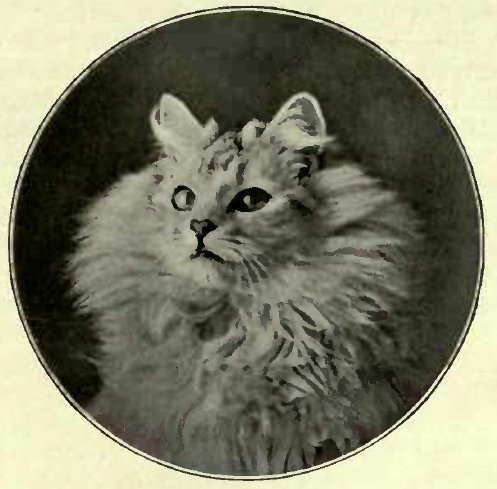
What I consider is more practical than open judging for cats is that some arrangement should be made so that judges may be enabled to compare the points of the various exhibits, and for this purpose I consider that judging pens on movable tables should be provided at all shows, as were adopted by the Cat Club at Westminster. By these means the work of the judges would be much simplified, and the cats more satisfactorily and quickly judged.
Supposing a special prize or medal is offered for the best cat in the show, then I think it -is interesting and instructive to have the first prize winning cats placed, if possible, in pens, and to arrange for the award to be given in public during the show by the judges in conjunction with each other. Such a plan was adopted at the last Manchester Cat Show, and much satisfaction was expressed at this innovation.
Having given some suggestions as to the classification, I would again refer to points of management in shows. At the closing hour on the second day the hall should be cleared, and only exhibitors or their representatives allowed to remain. An efficient staff of attendants should at once set to work to assist in packing up the cats belonging to those exhibitors who intend taking them away. After these have all left, then the manager should direct his attention towards those exhibits that should be started by the night mails. The catalogue must be consulted, and a good way is to mark with a cross on the pen tickets those cats that must be packed up; and, having previously ordered the railway vans at a certain time, the precious packages should be sent off as speedily as possible. Those exhibits left over till the following morning should be fed again and started at daybreak.
There is a sense of immense relief when the last hamper has been fastened down and seen off the premises. And here let me say how much exhibitors can contribute towards the speedy and safe despatch of their pets, if only they will provide substantial and well appointed travelling baskets or boxes. Amidst all the hurry and confusion of packing up an immense amount of extra trouble is given by having to lace up a hamper with string, or nail down a box that has no other means of being made secure! I speak from experience, and therefore I plead for more consideration to be extended to the show manager and his assistants, and, above all, to the poor pussies themselves.
At every show that is held there are a number of exhibitors who try the patience and courtesy of the manager or secretary, or both, by requesting to be allowed to remove their cats before the advertised time. Of course, it is only natural that those fanciers residing at a distance should wish to make tracks home and catch early trains tor their own comfort and convenience and the welfare of their pussies. But, looking at the matter from a secretary’s and a visitor’s point of view, it is certainly hard that perhaps some of the best prize cats should be absent from their pen whilst the public are paying their money at the gate; but, having made a rule, it is best to stick to it, and no cat should be taken away till the fixed hour under any pretext whatever, unless a veterinary certificate of illness is obtained.
It is always open to the management to advertise an earlier hour for the removal of exhibits on payment of a certain sum, but this should be made a substantial fine, especially in the case of a prize-winner. A lower figure might be named for other exhibits. As regards cats or kittens purchased at the show, it is certainly an inducement and incentive to buyers if there is a rule that these exhibits may be removed at any time.
According to the rules of the two leading clubs a certain fixed time must elapse before the prizes are sent out. In some cases this is a most uncertain and unfixed time, and many complaints have been made through the cat papers of the long drawn-out period between the prize being won and the prize being received. No doubt, immediate distribution of prizes after the show would lead to complications, for objections might be lodged within the given time allowed by the rules, and such objections would have to be brought before the committee of the club; therefore it is obvious that successful competitors must allow, say, a month to elapse before showing signs of impatience. It is then the manager’s business to send the money awards, and the secretary of the club is generally accountable for the distribution of the “specials,” which certainly call for a special acknowledgment from the recipient to the donor of these prizes.
As regards the financial aspect of a cat show, the first important point is to make the entries pay for themselves – that is. supposing your prize money in each class is £1, 10s., and 5s., then you need twelve entries at 3s. to carry you through. And here let me remark that, considering the character of our first-class shows and the value of the special prizes offered, I am inclined to think that entry fees are too low, and that they should be more in accordance with the fees charged at dog shows. It is always advisable to make a difference between members of the club holding the show and outsiders. Thus, if 5s. is the entry fee for members, then 6s. or 7s. 6d. might be charged to non-members. New recruits to a club are often gained by this arrangement. The usual commission on sales is 10 per cent., and then there is the gate money, which somehow is generally disappointing, for truly the outside public are not partial to cats, nor attracted to exhibitions of the feline race. I have always contended that exhibitors themselves ought to be charged an entrance fee – say, half – price admission on presentation of their exhibitor’s pass, which in many cases would only be sixpence, yet one or two hundred of these small coins would materially assist the exchequer; and surely no cat fancier would grumble at this tax on their resources when they consider how much trouble and expense is entailed in providing them with a favourable opportunity of exhibiting their pets, and with a possibility of winning golden guineas and silver trophies.
Another plan is to advertise in schedules that exhibitors of more than, say, two entries would be allowed a free pass. Fanciers will be tempted to send additional cats, and thus swell the entries, in order to secure their free admission ticket. I do not think it would be a bad plan to have a “Contribution Column” on the entry forms for members’ and exhibitors’ voluntary donations towards the expenses of a show which, if well managed, is worthy of the utmost support from the cat-loving community.
“Every mickle makes a muckle,” and it should be the earnest desire of each individual member of a club to do something, however small, towards keeping a balance on the right side of their treasurer’s accounts.
Buying And Selling
I believe that a Bow Street magistrate once asserted that anyone owning a stud dog or selling a dog was, in the point of law, a dealer. I do not know if the same decision would apply in the cat world. Anyhow, there are few fanciers who do not desire at some time or other to dispose of their cats and kits; and, again, there are many who keep stud cats, yet cannot be considered dealers in that sense of the term. The best way to set about trying to sell our surplus stock is to advertise in the cat papers, in which case it is advisable to fully and fairly describe our animals and to name the price required. If profit is to be considered, it is not advisable to keep kittens more than eight weeks. Very soon after this period they begin to lose their fluffiness and grow leggy in appearance. There is also the risk of illness and death. It is better, therefore, to be willing to accept a moderate sum for kittens at eight weeks old rather than to keep them to see how they turn out. It is a clear case of “a bird in the hand is worth two in the bush.”
I have always thought that there is a good opening for any enterprising person well versed in cat lore and cat fanciers to start an agency in London, where cats and kittens might be sent on approval, for would-be purchasers to call and interview them. There might be a system of messengers who would meet cats and see them off at London stations. In connection with such a cat agency a register might be kept of cats for sale or cats wanted and arrangements made as at the Army and Navy Stores for having a certain number of animals on view. These could be boarded at so much per week, and commission charged on the sale.
A list of names and addresses of those willing to receive cats as boarders would be very useful, and many ladies who do not choose to advertise could and would, I am sure, avail themselves of the means of letting fanciers know they could undertake the charge of pets during their owners’ absence from home. Many and frequent are the letters I receive on this subject, especially as the summer vacation approaches.
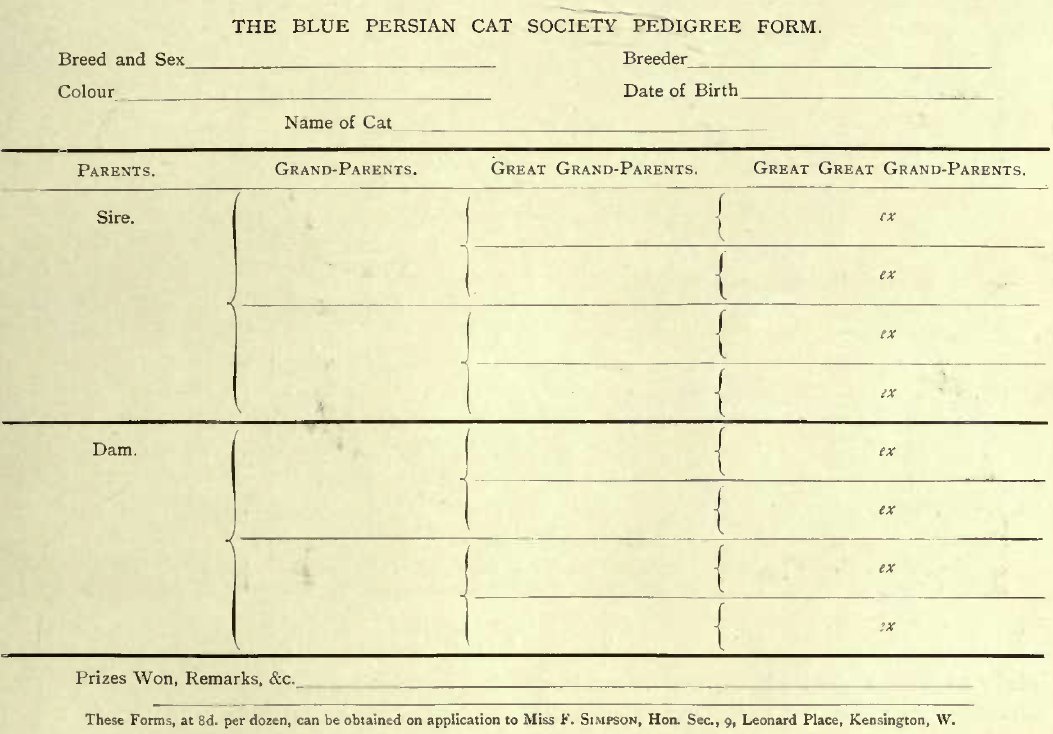 A day and hour for the visit of an experienced veterinary might be arranged, so that country fanciers could send or bring their sick cats for advice. All sorts of cat appliances might be on sale. It would be convenient to have a writing-room for the use of fanciers, where correspondence on catty matters could be carried on. Perhaps a tearoom could be added, and bedrooms, if space was available, for fanciers coming up to attend London shows. Anyhow, a list of suitable rooms might be kept which could be personally recommended.
A day and hour for the visit of an experienced veterinary might be arranged, so that country fanciers could send or bring their sick cats for advice. All sorts of cat appliances might be on sale. It would be convenient to have a writing-room for the use of fanciers, where correspondence on catty matters could be carried on. Perhaps a tearoom could be added, and bedrooms, if space was available, for fanciers coming up to attend London shows. Anyhow, a list of suitable rooms might be kept which could be personally recommended.
In these days, when competition is so keen and occupation so difficult to obtain, the idea of starting a cat agency should commend itself to some who, being in touch with members of the cat fancy, and wishing for lucrative employment, might embark on this novel undertaking. Needless to say, it would be most desirable to have the cat agency in a central part of London, and in close proximity, if possible, to some of the main railway stations.
I think that, if only as a means of assisting fanciers in the purchase and disposal of their cats and kittens, this idea of an agency might be successfully worked. Many breeders become very disheartened at the inability to find purchasers for their kittens. A complaint was recently made by a lady living in the Isle of Wight. She writes: “No one seems to care for breeding in this island, and people are not willing to give more than about five shillings for pedigree kittens.” No doubt fanciers living in the country and away from any catty centre have but little opportunity of finding a sale for their surplus stock. I would suggest photography as one means of making known the perfections of their pussies. A start in the right direction has been made by Mr. Landor, of Ealing, whose clever pictures of kittens are so well known. He is willing to take portraits of pretty, fluffy kits and good cats on special terms, provided he retains the copyright of such photographs. It is always handy to have a good photograph to send by post when endeavouring to dispose of our pets, and by such means fanciers may be spared the trouble and risk of sending their valuable kittens on approval.
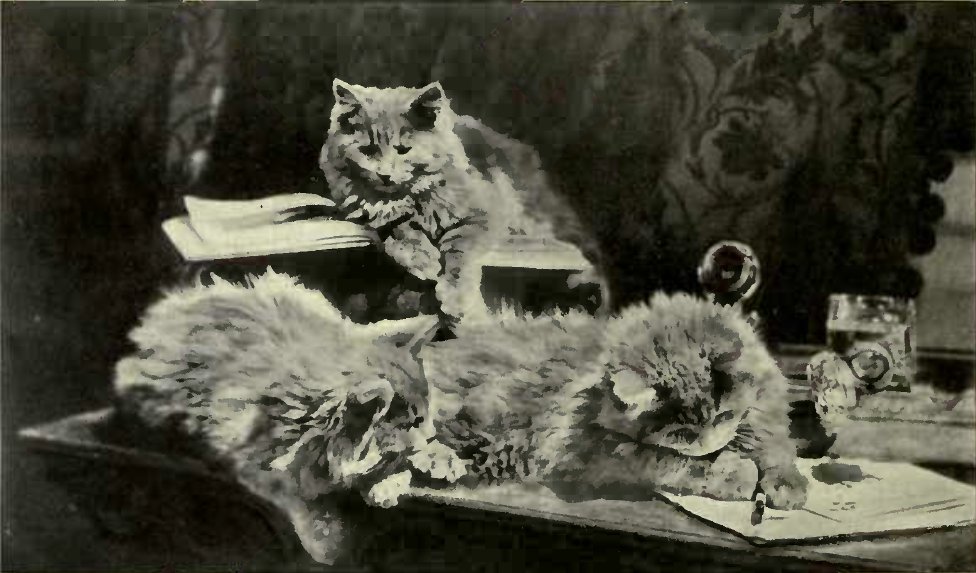
Naturally, for unknown cat fanciers it is more difficult to effect sales through advertisement, and in their case it is necessary to offer to send on approval at buyer’s risk and cost; and if an application is made from an entire stranger, then the purchase money should be deposited in the hands of some reliable and independent third person. Some fanciers entirely decline to send their cats on approval, and then it is very requisite to enter fully into particulars, and, if possible, to send a photograph. It is best to give the faults and failings as well as the good points, so that disappointment and disagreement may not follow between the purchaser and seller. Buyers should endeavour to learn something about the person from whom they purchase their cats; and it as well to ask not only for age and full pedigree, but whether the cat has been exhibited, and if it has taken any honours, and at which shows. It sometimes happens that valuable animals may be picked up for low prices at shows; but there is always a risk, and this is especially the case _ with young kittens, who more easily contract any disease. In buying a cat or kitten it is always advisable to make inquiries as to the way in which it has been fed, so as to continue the same regimen for at least a few days.
The pedigree of a cat or kitten should be sent at the time of purchase, and it is much easier to fill this in on a properly drawn out form, and certainly it is pleasanter to receive the particulars thus intelligently written out. I give a copy of the forms I drew out for the use of blue Persian members, but these can, of course, be used for cats of any breed.
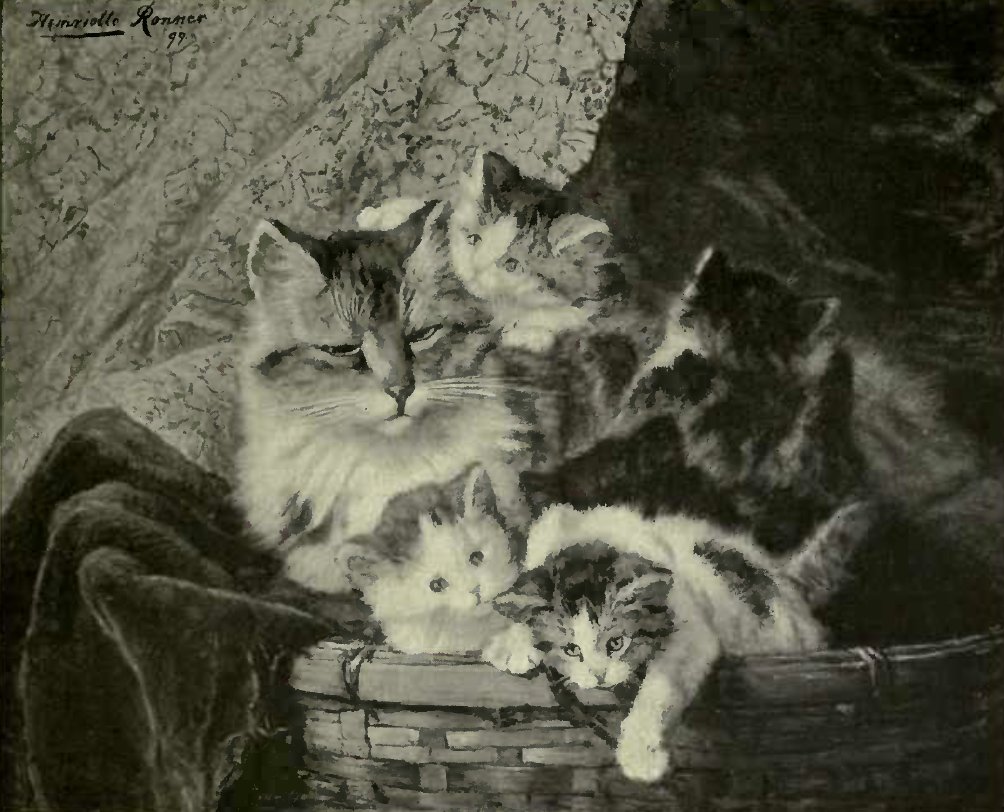
Here let me quote from an article in that excellent American paper, The Cat Journal, headed “Unreasonable Buyers.” The writer says:- “One of the most difficult things with which the cat seller has to contend is the unreasonable buyer. There are buyers who, finding a cat to suit them, pay the price and are satisfied. There is, however, another class that it is best to let alone. They are never satisfied, and blame the seller for everything that happens either on the road or after the kitten is received, and many of them also think if they are sharp they will be able to buy a $100 kitten for $10 or S15, and when they get such a kitten and they discover that it is not worth $100, they are disgusted, and have a lot to say about unfair dealing, etc. If a kitten that has been a pet is taken from its surroundings, and sent on a long journey, the rattle and the unusual conditions of such a trip places her in a state of nervous terror, so that she very rarely shows off to good advantage in her new home. The purchaser, if a true cat lover, will appreciate all the trouble of poor little pussy, and give her the tenderest treatment and coax her to make the best of her new surroundings.
It is a very rare thing for a kitten to come from the box after a long journey looking just as the new owner expected. Tired, homesick, and frightened, she will not eat, and is altogether a pitiable looking object. It is always advisable to put a new arrival in a room by herself, with a comfortable bed and conveniences, entirely away from the rest of the cats and kittens, and allow her to become acquainted with the members of the family gradually. Do not allow other cats to come bothering around till the new member of the family is entirely acquainted with its surroundings. Especially be very cautious in introducing two male cats.
“Sellers must be very cautious in sending out their stock, and buyers must not expect too much. Give the new member of the family a little time to know things before you write your letter of complaint. Be sure you are not expecting too much for the price you paid.”
The question has often been asked, “Can cats be made to pay?” and, naturally, novices in the fancy wish to know the best way in which to make a good start.
Here I would say how much may be done by well-known and influential members of any fancy if they will give themselves a little trouble in helping the novice, who, after all, is the backbone, so to speak, of every fancy, and hence it is very essential that beginners should start on the right lines and with reliable, and therefore profitable, stock. Speaking from experience in the cat fancy, I can say that several persons have come into the ranks and gone out of it again, in many cases through sheer disgust because of the deceptions practised, and of which they, as novices, have been made the victims. I hold that if beginners are to be retained as members of a fancy, they should be treated kindly and liberally by the experienced fancier, especially when it is a question of purchasing stock. It is much to be lamented that novices are frequently treated in a reverse manner, and fanciers (so-called) seize upon an opportunity of getting rid of superfluous and often inferior specimens to those who are unable to discover good from bad in the cats offered to them.
At the same time, it is a pleasing fact that there are many true fanciers in the feline world who, having made their names as breeders, prize-winners, and perhaps judges, put themselves out to give valuable advice, and often spare no pains in endeavouring to obtain good stock for the novice at reasonable prices.
Another question often asked is, “Does showing pay?” In answer to this query, I give an extract from the pen of the clever weekly correspondent of Fur and Feather, “Zaida,” who says: – “To those who keep their cats for pleasure, who really love them and can afford to despise the small ‘takings’ available, keep your cats at home and do not show. Expense does not count with this class of exhibitor, but risk to the welfare of their best-beloved pussies undoubtedly does. To those who are trying to make money by their cats, we would urge: harden your hearts, learn how to show, where to show, and when to show; and recognise the expense, risk, and trouble involved as part of the unavoidable outlay which is to bring in a certain return. Undoubtedly, a show is a heavy expense, and will always leave you out of pocket. Even if you conduct it on the most selfish terms – the ‘give-nothing’ and ‘take-all-you-can’ system – you will be exceptionally lucky if you clear your expenses. You cannot expect to sell your kittens well if you do not exhibit.
“If you possess a stud cat, he must be seen and known before you can hope to have a demand for his services. Your own eye must be continually trained by comparison of your own stock with the prize specimens of others. In short, if you wish to make money, you must spend money. On the other hand, never exhibit except at first-rate shows, and never be tempted to show an animal out of condition. If you can afford to buy animals already well known in the show world, cats of renown, for whose offspring there will always be a keen demand, you may possibly abstain from exhibition. This plan, however, involves a very large initial outlay. Then, again, the happy people who have won their laurels, whose names are always associated with first-rate animals of a particular breed, they, indeed, can afford to rest in peace, and show no more. Other people will buy their kittens, and do their exhibiting for them, and also do that mournful nursing and burying that too often follows a show. Undoubtedly, it is fascinating to show successfully; but, on the whole, we think the most enjoyable shows are those where one goes to look at other people’s exhibits and leave one’s own at home.” A few words as to the stud fees and arrangements for visiting queens will not here be out of place.
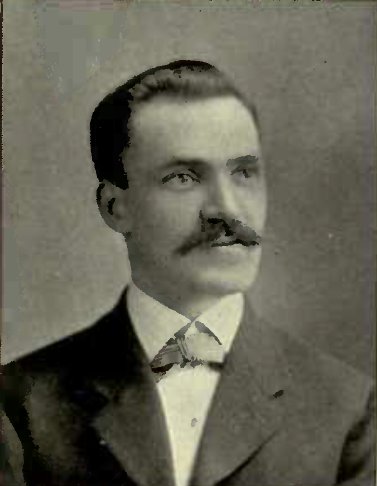
The usual fee for the services of a stud cat is fixed at £1 1s., but some fanciers are willing to accept less, especially if their cat is not a well-known prize-winner. A higher charge is often made if the railway journey has to be followed by a cab fare, or if the owner, having a valuable stud cat, does not wish to encourage many visitors. The carriage of the queen should always be defrayed by the sender, and if a telegram and return insurance is desired, then these sums expended should be refunded to the owner of the stud cat. It is desirable to announce the despatch or intended despatch of a queen, as it may not be convenient to receive her. The usual time to keep a visitor is from three to six days, and then the owner of the stud cat should give notice of the return. In case the first visit proves unsuccessful a second visit is usually allowed by courtesy without any extra payment, but this must not be taken as a matter of course, and it is best for the owner of the queen to ask permission to send again. If through a mistake in the time of sending a cat apparently fails to mate during two visits, it can only be by the kindness of the stud cat’s owner that a third visit is permitted for the one fee.
If, however, the queen has been known to have mated on each occasion, a third visit gratis cannot be expected even if there is no result. A fee once paid for a visit is not returnable. It is sometimes a matter of arrangement between fanciers to have the choice of a kitten instead of the mating fee, but this transaction does not commend itself unless the parties are on very friendly terms. A clear understanding should be arrived at on all occasions between the sender and the receiver, and thus any after unpleasantness may be avoided. It is catty etiquette to forward the fee when sending the queen or, at latest, immediately on her return. A label for the return journey should be fixed inside the lid of the hamper. This is a saving of trouble to the owner of the stud, and is also a means of identification.
In selecting a young kitten for purchase out of a litter, take note of the size of head and width between the ears. In self-coloured kits look out for white spots, and avoid those with long tails. Fanciers should strive to resist the temptation of buying too many cats and kittens of different breeds. To the novice and the beginner I would say, Buy two or three good specimens, carefully selected; these will be worth quantities of doubtful ones, which, as a matter of fact, have, as a rule, no value at all. Seize every opportunity which comes across your path of seeing and examining well-bred, prize-winning cats, and attending shows. The cleverest fancier and most successful breeder can improve himself by observation and education.
Do not be offended if you are told by those who have had a larger and longer experience in the fancy, and who are really experts, that you have made a mistake in any purchase. If you resent their criticisms, you may, and probably will, accumulate much rubbish as a monument of your own conceit. A great deal may be learnt from books, but more from observation. Above all, do not, when you have acquired some knowledge, form too high an estimate of your own powers and of your own cats; a true fancier is always ready – nay, anxious – to learn, well recognising that ignorance alone claims to be omniscient.
Local Cat Shows
As an example of the ever-increasing interest shown in cat sections at local shows, the following account, kindly supplied to me by Mr. F. W. Western, the secretary, will be of interest: “Sandy Show has long since outgrown in size and importance the title it bears, viz. ‘The Exhibition of the Sandy and District Floral and Horticultural Society.’ The first schedule, issued in 1869, catered for plants, flowers, fruit, vegetables, poultry, and cage birds. In 1880 pigeons were introduced, and in 1883 rabbits were added. Later, in 1899, dogs put in an appearance with four classes. It was not, however, until 1894 that our friend ‘pussy,’ in whom we are especially interested, made her debut at Sandy, and as we look at the schedule for that year we are driven to the conclusion that none but a philosopher could have drawn up such a classification for our pets. The trouble which we now frequently experience at a cat show of being ‘wrong classed’ could not well arise on that happy day in August 1894, when eight catteries were represented in the one and only class, viz. ‘Any variety, any age, male or female.’ But if our pets made a modest bow to the public in that year, they have lived to be proud of their position. In the succeeding year three classes were provided, bringing together 31 cats.
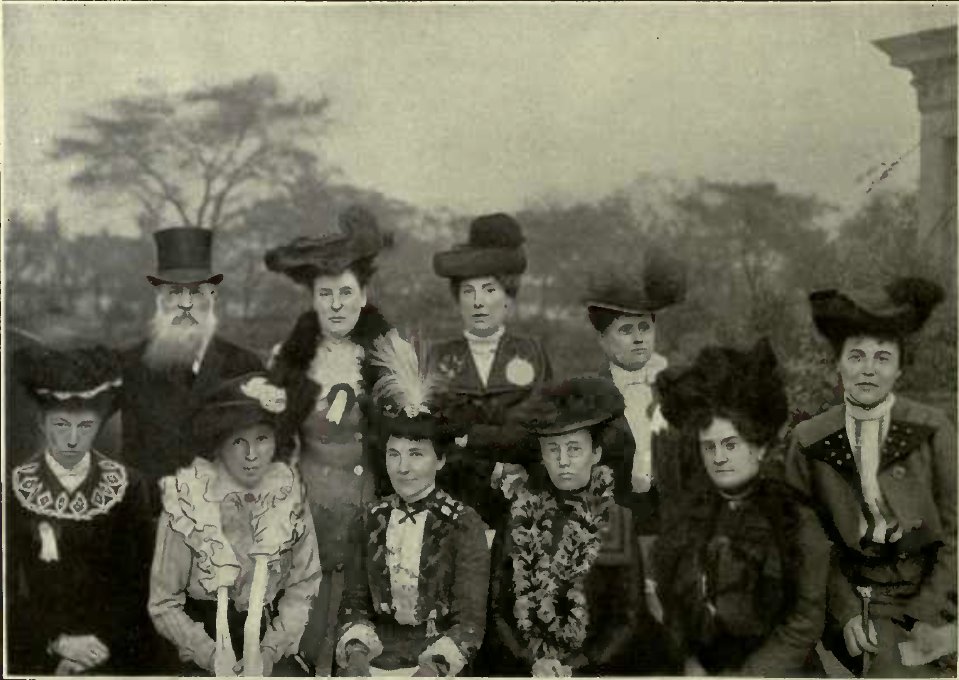
From this date the cat classes have shown substantial improvement. The year 1900 found Sandy with five classes and 41 entries. By this time the cat fancy throughout the country had come into prominence; clubs had been established, and specialist societies were springing into existence. With a leap forward the cat section of the 1901 show numbered 20 classes. This was far too bold a bid for popularity to be lightly esteemed. The support was obtained of the Cat Club, the Silver Society (to-day the Silver and Smoke Persian Cat Society), the Short-haired Cat Society, and the Siamese Club.
“Generous aid was given by many individual lovers of cats, and fifty special prizes, in addition to the class prize money, were offered. The show was attended with success, both as regards the number (about 150) and the quality of the exhibits. From a public point of view, moreover, the result was most gratifying.
“The cat tent was crowded throughout the day, and this section was acknowledged on every hand to have been one of the best features of the show.
“With such success attending their first earnest venture in cats, it is not surprising to find that the committee resolved still further to increase the classification. In August 1902, therefore, 32 classes were arranged, of which 21 were guaranteed. Special prizes numbered 85, and the cat section had the support of all the specialist societies.
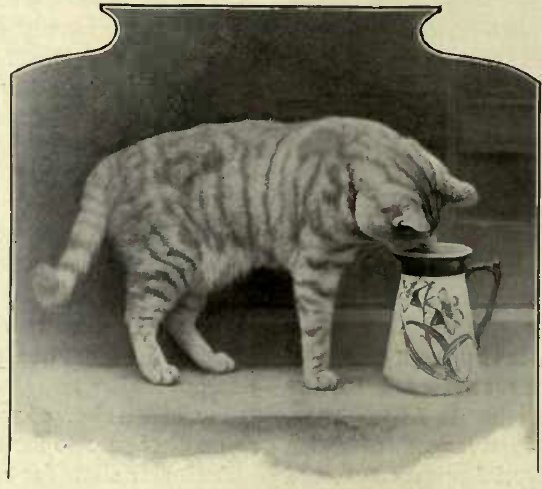
“With such attractions the splendid entry of 1901 was eclipsed, and at the very worst time of the year for cats as many as 266 entries were made. Long-haired cats were decidedly well represented, and in the blue kitten class 21 specimens were penned. In the short-haired classes some noted winners appeared.
“Ring classes were provided, and proved a great attraction to the public. The local classes were proof that Mrs. F. W. Western has succeeded in interesting some of her friends in the hobby, and the specimens to which the honours fell would have done well in the keenest competition.”
Mention was made in the list of clubs on a previous page of the Northern Counties Cat Club, which was founded in 1900. The committee decided on holding a one-day kitten show in September of that year, and the judges selected were Miss D. Champion, Miss Frances Simpson, Mr. T. B. Mason, and Mr. L. P. Astley. Entries came up well, numbering 154, and this novel undertaking was in every way a great success. The Northern Counties Cat Club kitten show is now an annual fixture, and on October 1st of 1902 a really splendid exhibition of promising youngsters was held at Bellevue, Manchester. Twenty-two classes were arranged, and over fifty specials offered. Entries were twenty in excess of the previous year, and would have been still higher in number had not sickness prevented several well-known silver breeders from exhibiting. The litter class numbered 17, and these, with the splendid blue classes, were the chief glory of the show. There were 18 pairs of blue kittens and 40 entries in single blue kittens, and it was most noticeable how few of these specimens failed in eyes.
There were rows of gleaming orange orbs that rejoiced the heart of the Hon. Sec. of the Blue Persian Cat Society.
The kitten show of 1902 may fairly be classed as another success for the Northern Club.
A similar show for cats and kittens is held annually in December in Manchester by this enterprising club. I am indebted to Mrs. G. H. Walker for the group of officials and members of the Northern Club. The photo was taken by Mrs. Walker at the Manchester kitten show of 1902.
In connection with the dog show of the Ladies’ Kennel Association, an exhibition of cats is now held annually at Harrogate under the rules and patronage of the National Cat Club. The first venture in this popular and fashionable water resort was made by Mrs. Stennard Robinson in 1901, when entries came in splendidly; but rain descended most disastrously, and seriously interfered with the success of the show and the attendance of visitors. In 1902 the weather proved most favourable, but the cat section suffered considerably as regards numbers of exhibits in consequence of the date clashing with that of the Sandy Show, held also on August 28th. On this occasion the Hon. Mrs. McLaren Morrison was advertised as judge, but owing to ill-health her place was taken by Mrs. Stennard Robinson, and Mr. J. B. Townend, of the National Cat Club, undertook the management. The Midland Counties Cat Club held its first show in Birmingham. The classification was on a liberal scale, and several of the classes were guaranteed.
Several of the specialist clubs supported this first venture of the Midland Counties Cat Club. A new departure in the matter of shows may shortly be attempted, and a scheme has been submitted to the cat world by the Hon. Sec. of the Silver and Smoke Persian Cat Society, that the specialist societies should combine and hold a show in the West of England. Each society is to be asked to bear a part in the expenses, and secretaries will probably hold a meeting to consider the best ways and means of carrying out such an undertaking. It is not intended that such a show should be in any opposition to those held by the parent clubs, and registration in either of these clubs will be enforced; but, to quote the words of a well-known fancier and supporter of the specialist societies, “It is simply a way of escape from the enforced division of interests, and a means for permitting the cats of all club persuasions to meet on equal ground. As matters now stand, open competition is a thing of the past, and the sooner it becomes a possibility again the better for the cat fancy.
On this ground, therefore, we think all unbiassed minds will accept with pleasure the scheme submitted to the public by the secretary of the S. S. P. C. S.” The Scottish Cat Club, which has Lady Marcus Beresford for its President, holds its annual show during the winter months, and its exhibition follows closely on that of the Midland Counties.
Under the list of winter shows mention may be made of the following, where, in connection with other live stock, cats play a more or less important part: – Peterborough, Sheffield, Hounslow, Kendal, Bedford,
Caterham, Hinckley, Hamilton, Don-caster, Yarmouth, Stratford-on-Avon, Bristol, Haverfordwest, Stockton. Cheltenham, Taunton, Epsom, Hexham, Lark hall, Stirling.
In this list I have made no mention of the great championship show of the National Cat Club, held annually at the Crystal Palace in October, to which the whole of cat creation looks forward with awe and longing. This is one of the greatest events in the cat world, and is always eagerly looked forward to by fanciers in all parts of the British Isles. In the schedule for the exhibition in 1902 no fewer than 216 special prizes were offered. Many of these were given by the following specialist clubs, who generously supported this annual fixture:- The Blue Persian Cat Society, the Silver and Smoke Persian Cat Society, the Chinchilla Cat Club, the Orange, Cream and Tortoiseshell Society, the Siamese Cat Club, the Manx Cat Club, and the British Cat Club.
The names of the judges acting on this occasion were as follow: – Mrs. Greenwood, Miss Forestier Walker, Miss G. Jay, Miss Cochran, Miss F. Simpson, Mr. Louis Wain, Mr. Sam Woodiwiss, Mr. C. A. House, and Mr. Jung.
In our latter-day shows the work of the judges is considerably augmented by the numerous specials that have to be awarded amongst the winners in the well-filled classes, and as regards the Crystal Palace show of 1902, the patience and skill of the judges making these awards were taxed to the uttermost.
The Cat Club’s show has been held for three years in succession at St. Stephen’s Hall,
Westminster Aquarium, about the beginning of January, and it is at this season that the really finest exhibition of Persian cats is witnessed, for at no other time are long-haired cats in such grand coat and good condition as in the middle of winter.
It is no wonder, therefore, with so many shows held throughout the length and breadth of the land, that the cult of the cat is becoming more and more widely known and appreciated, and that the fancy is really assuming such proportions that there can be no doubt of its permanent position amongst us.
